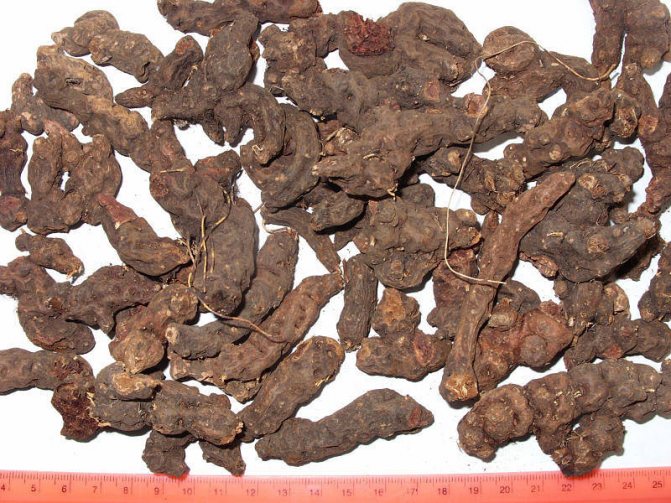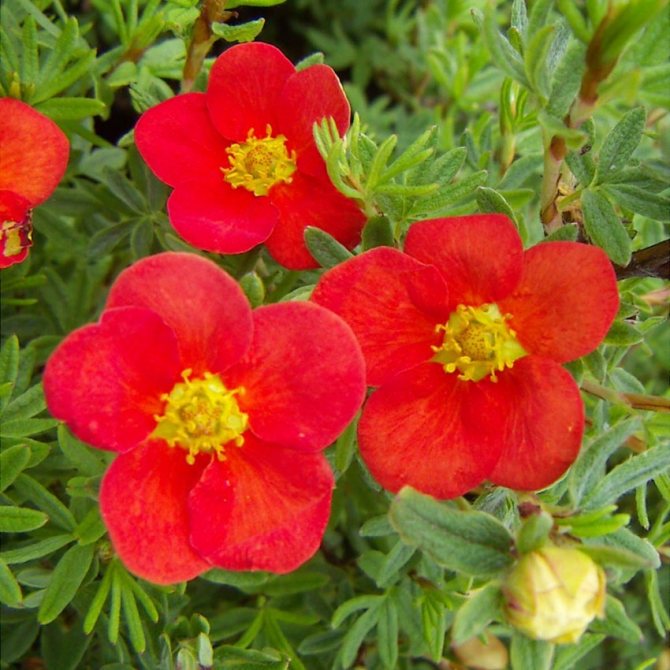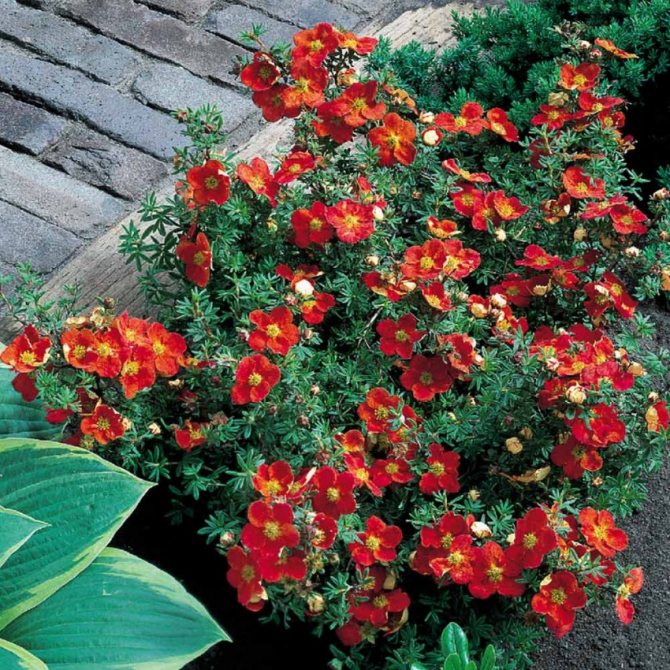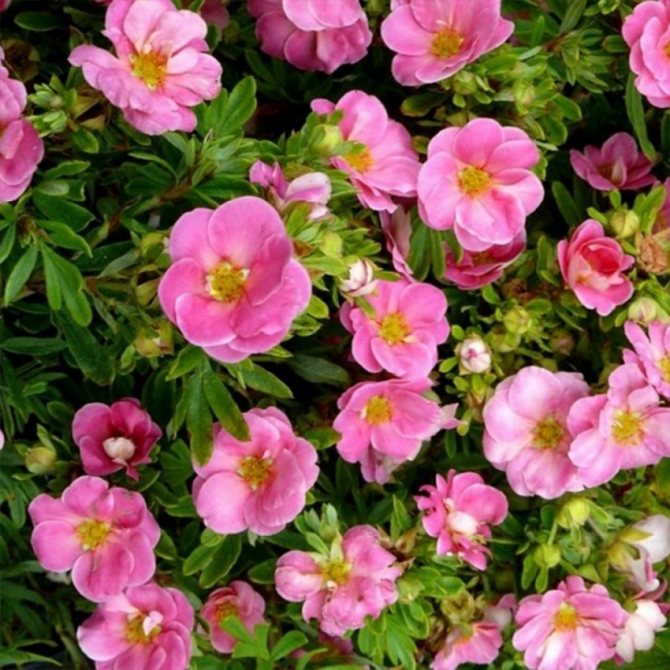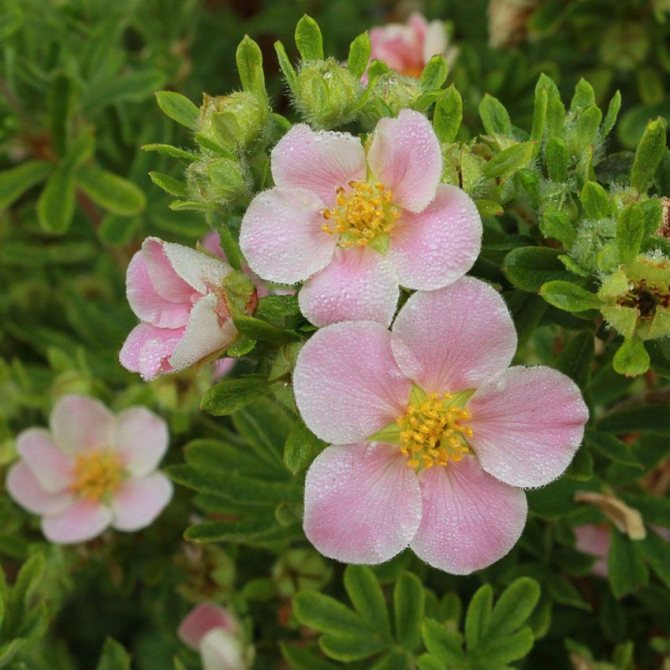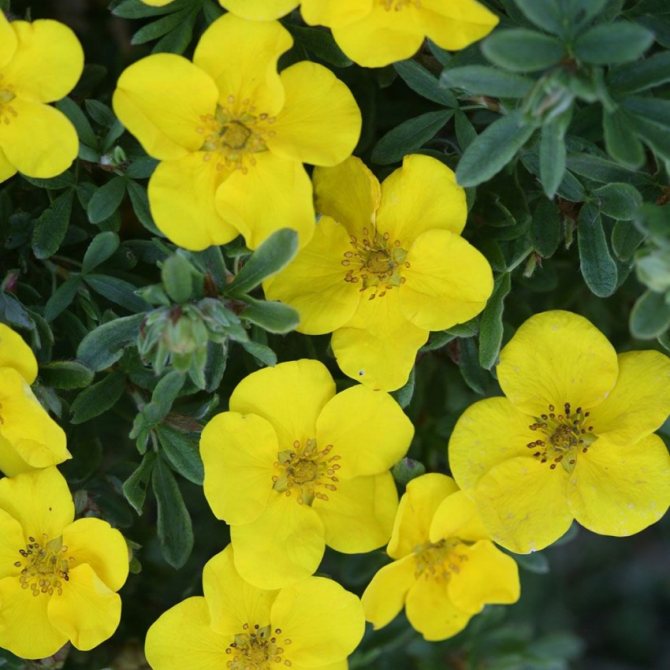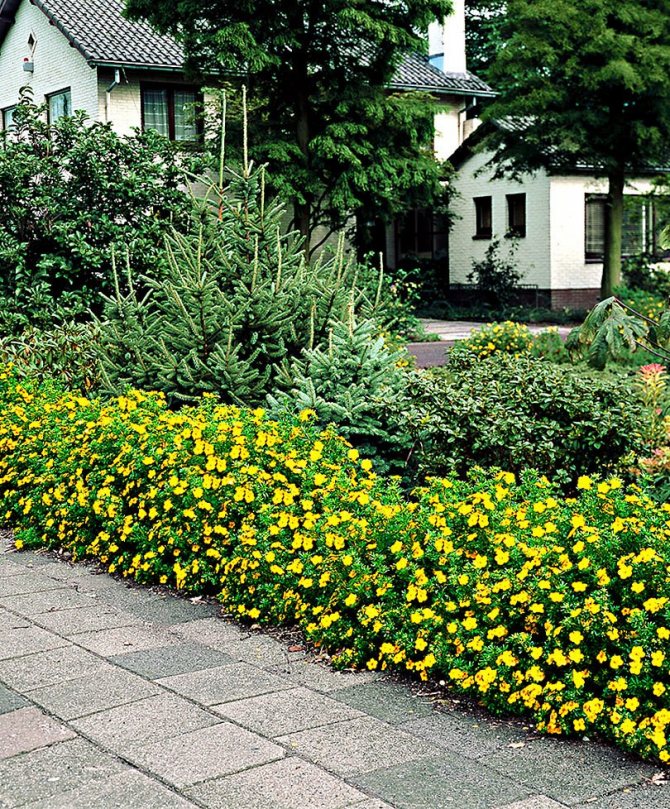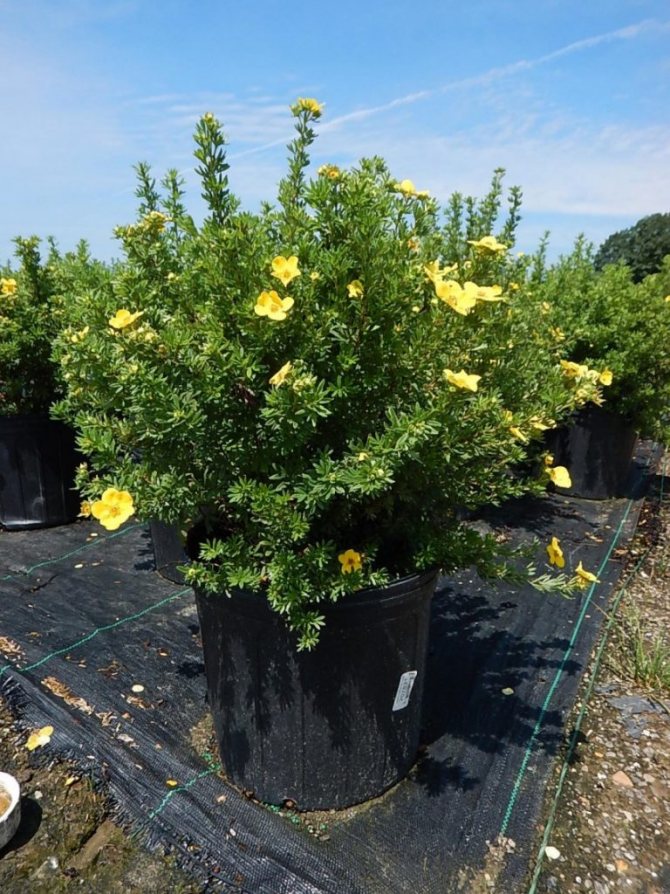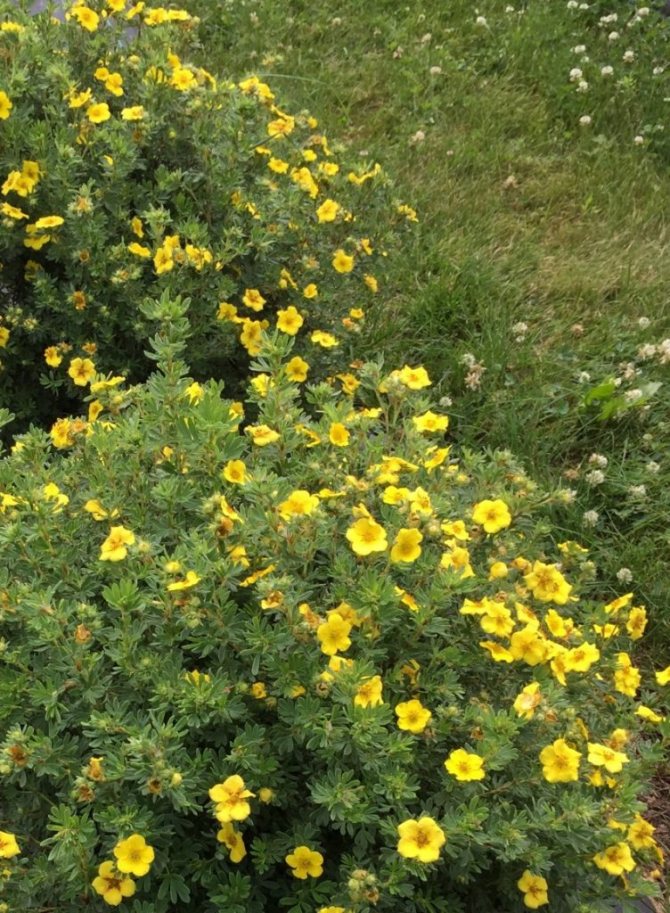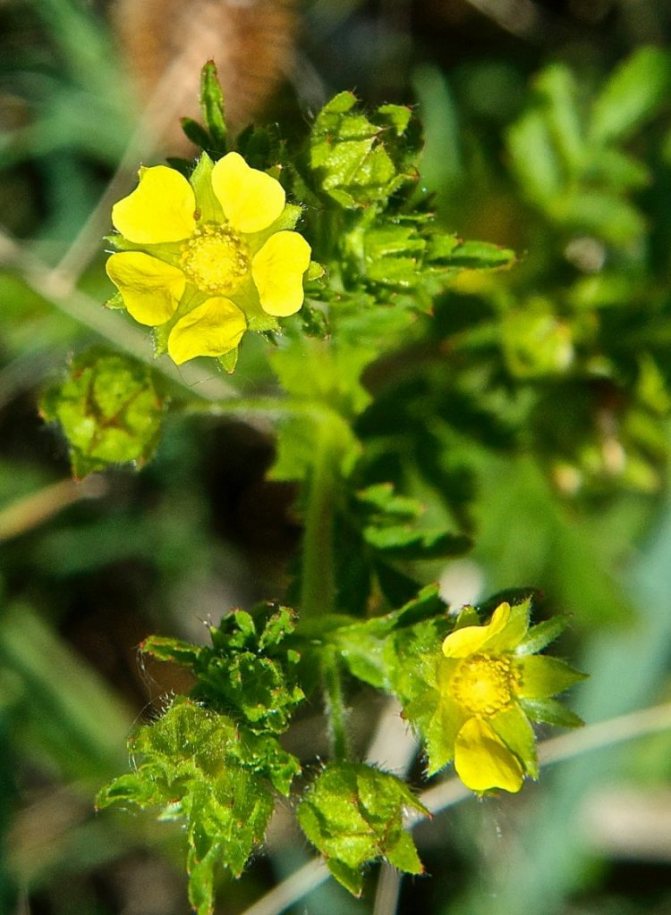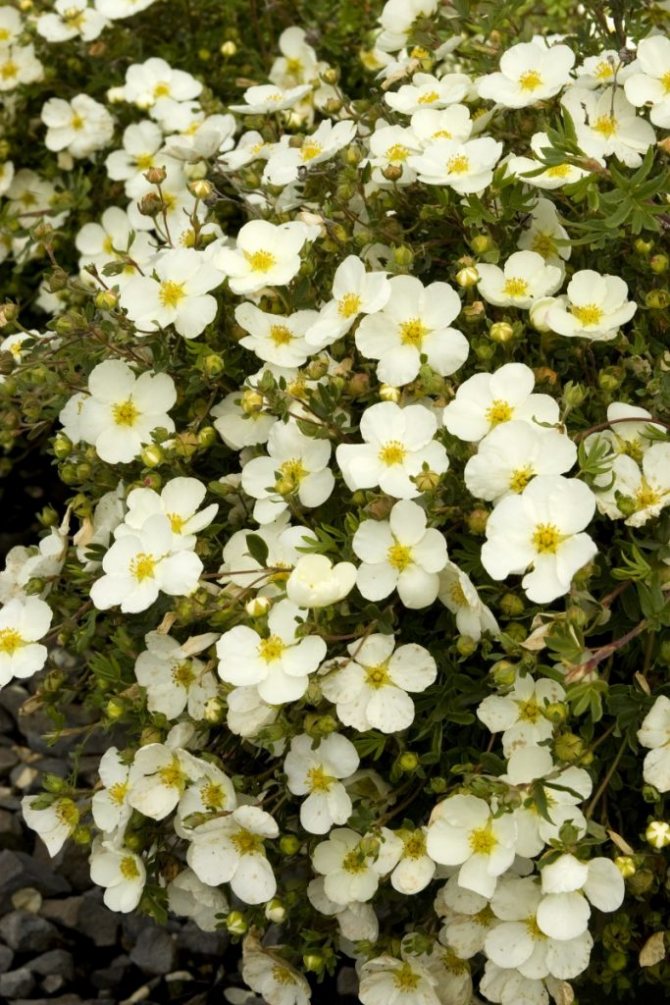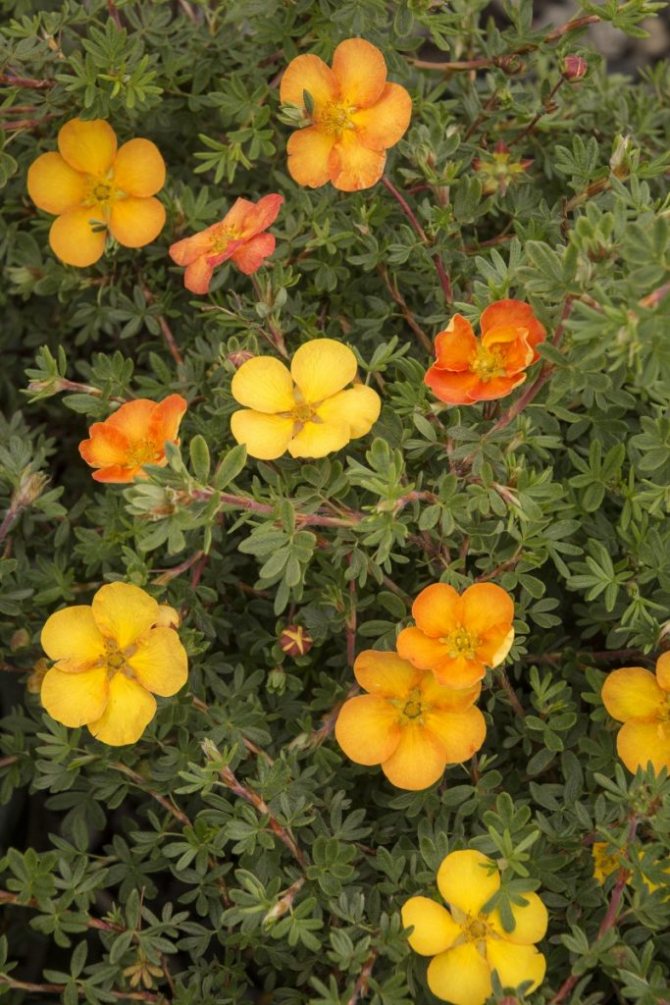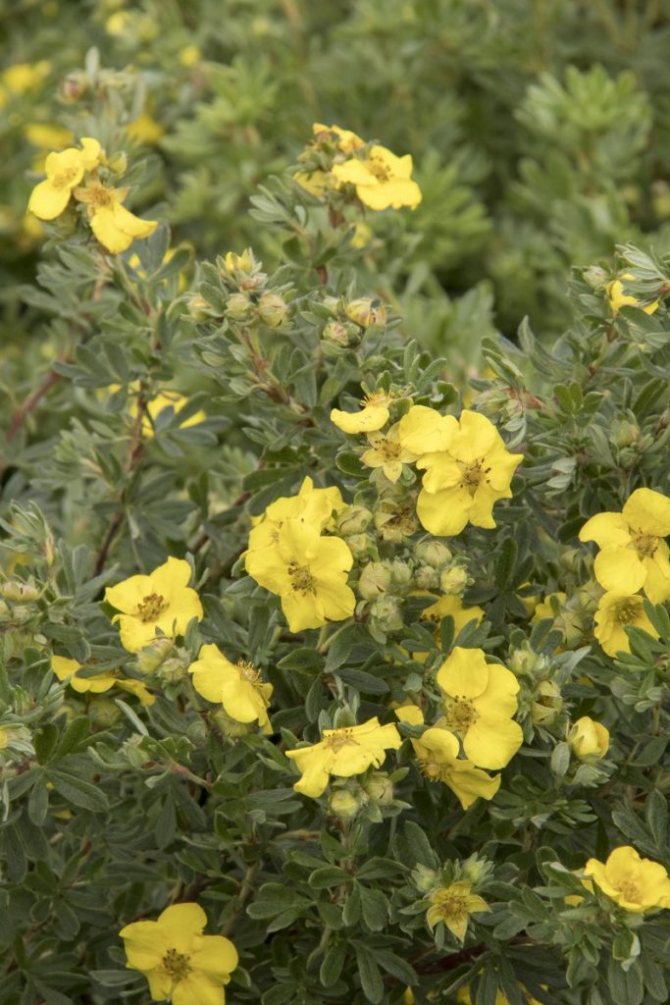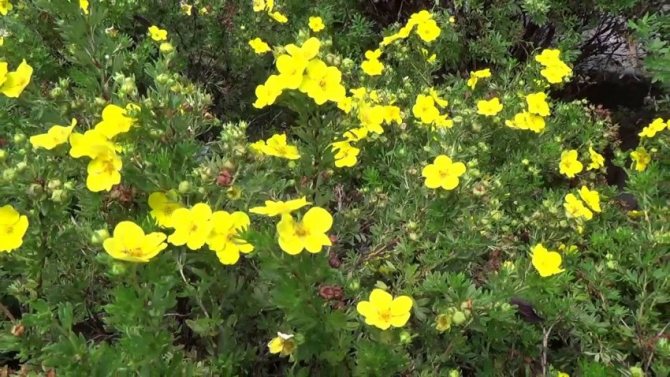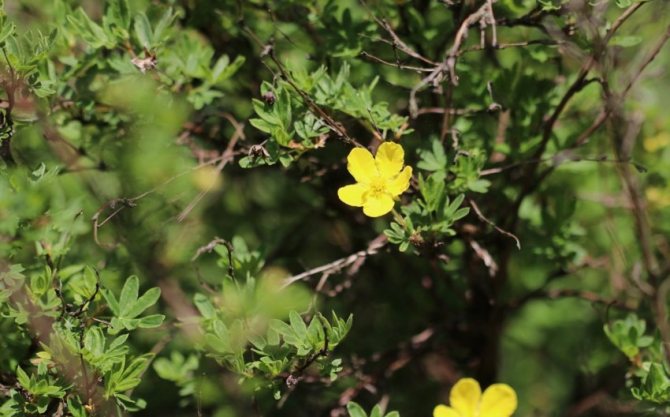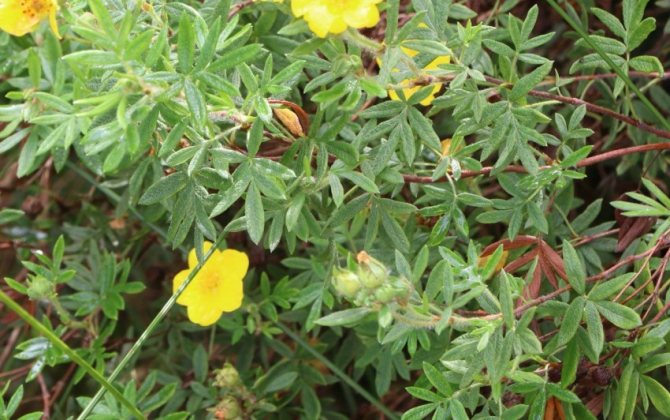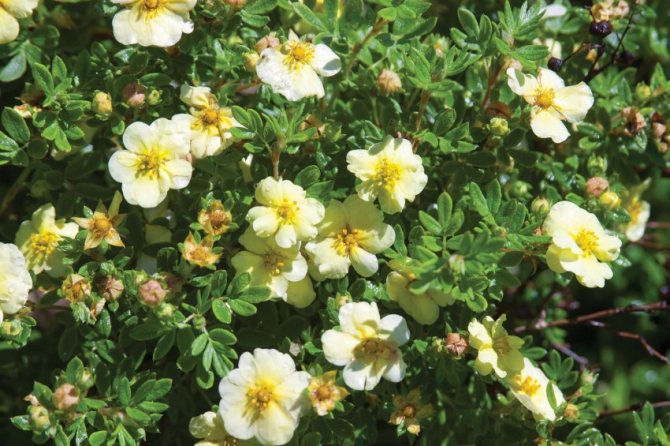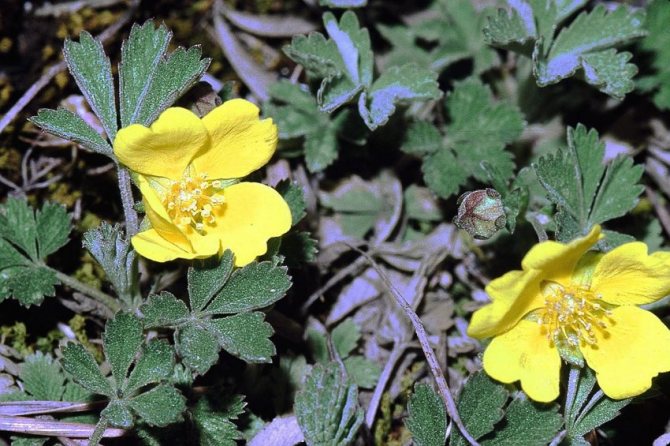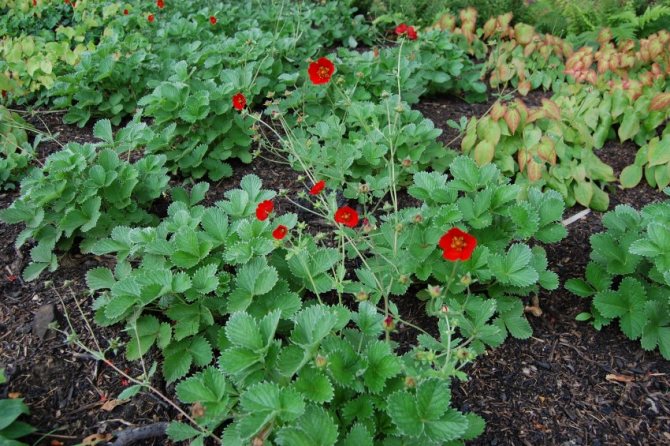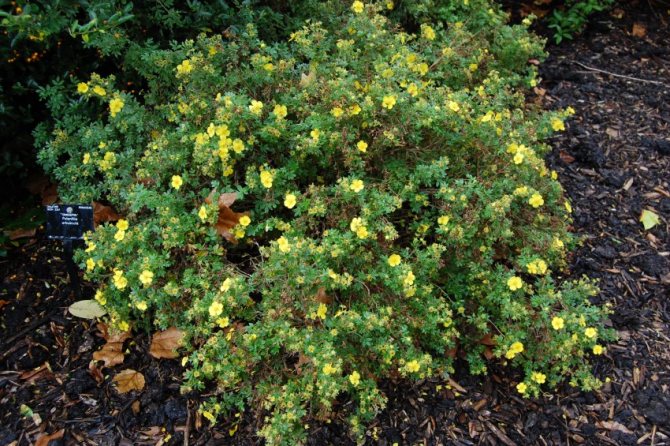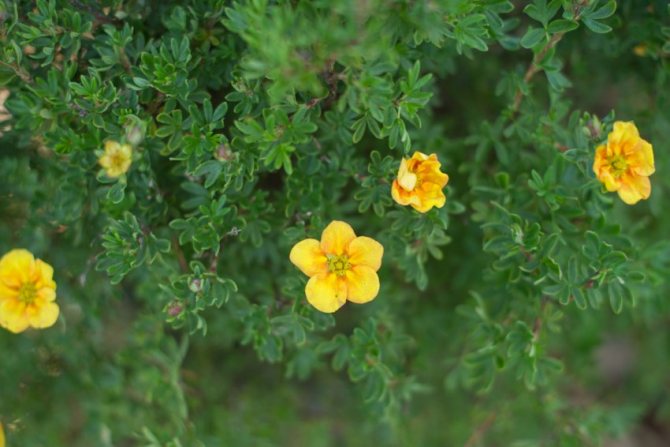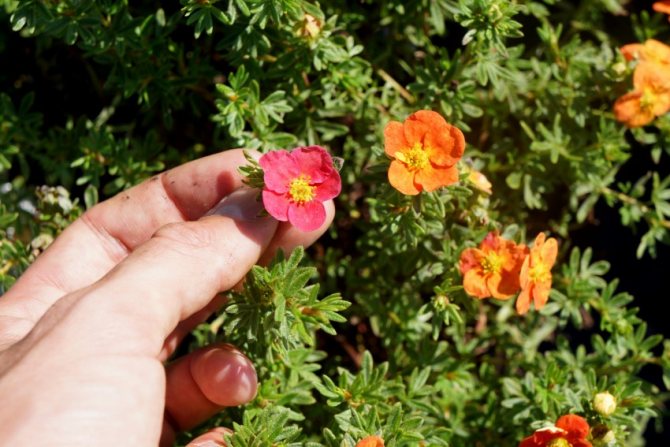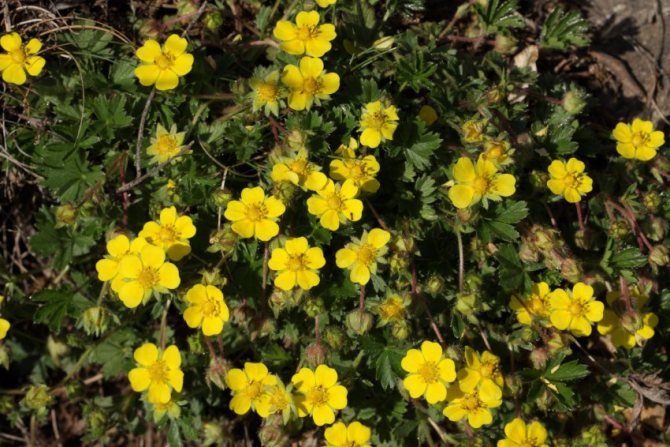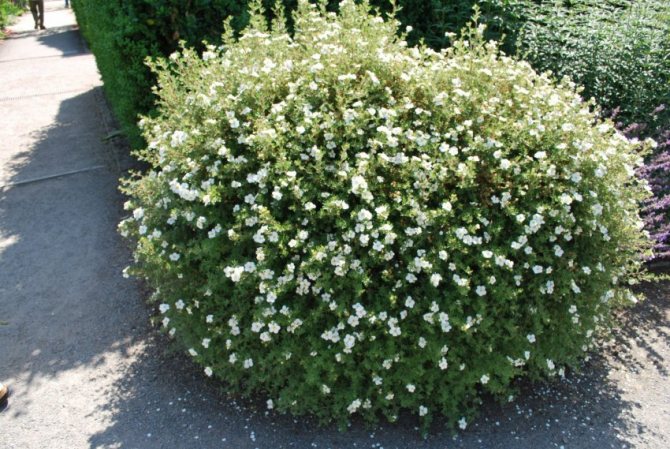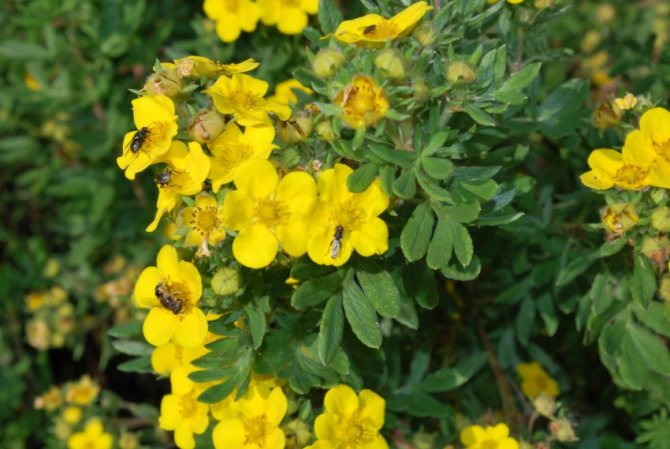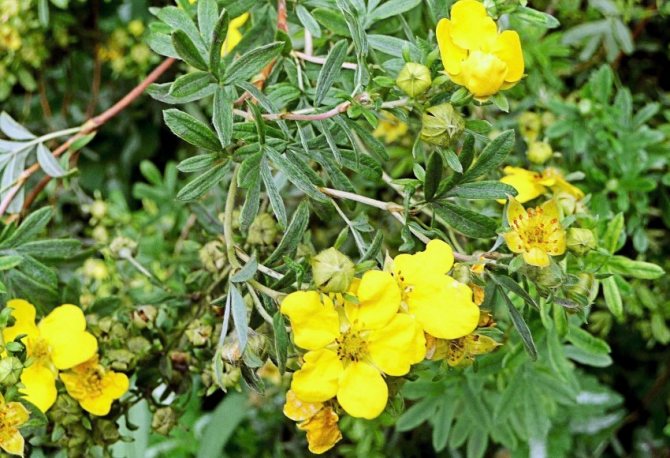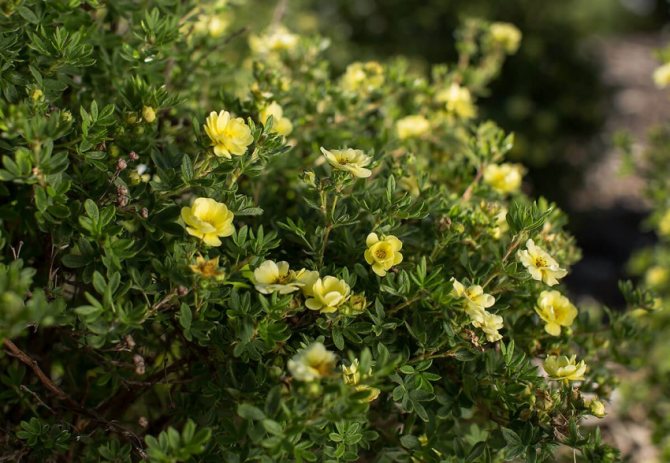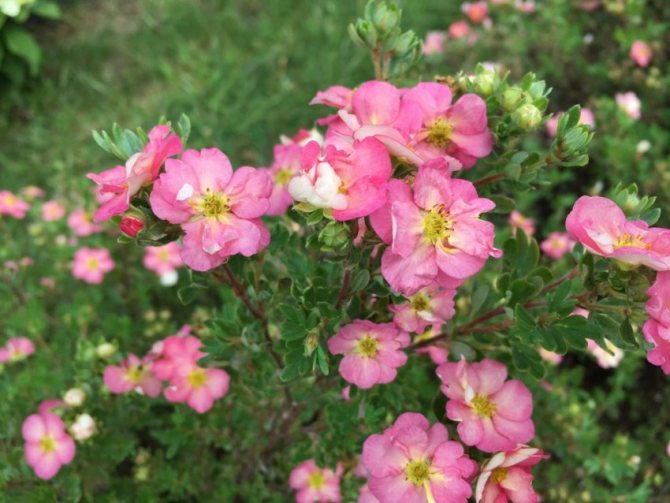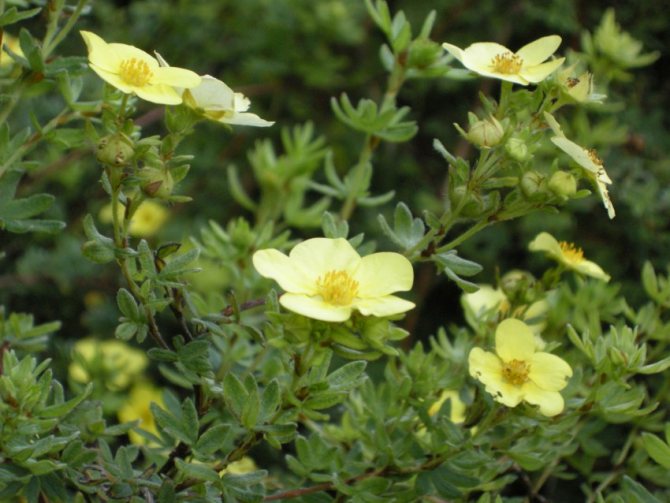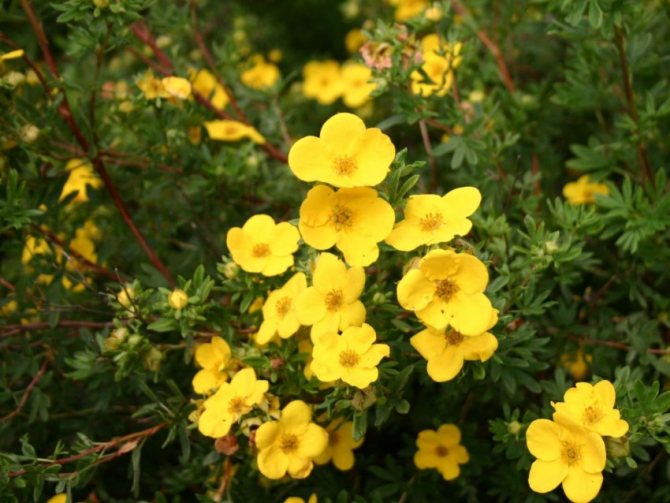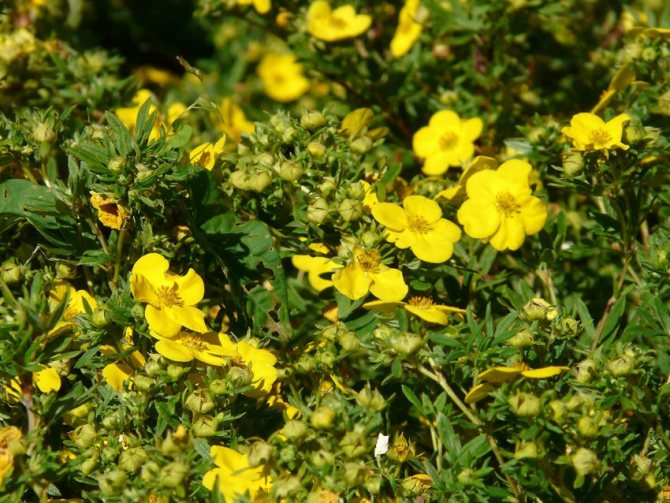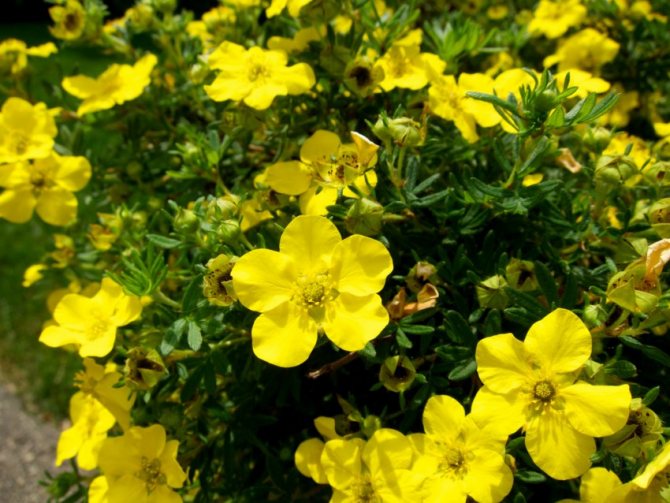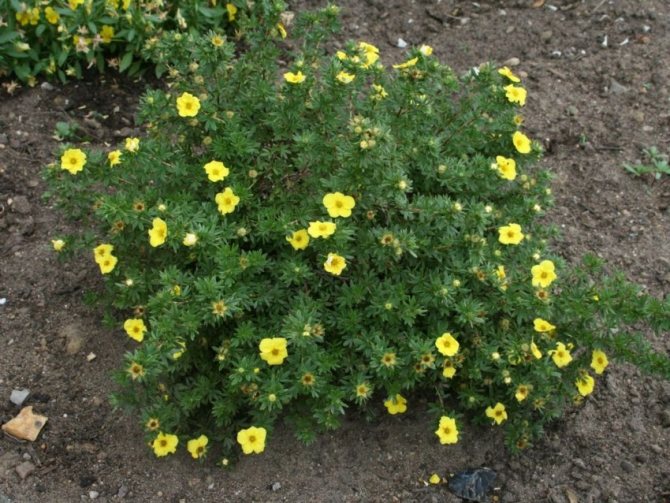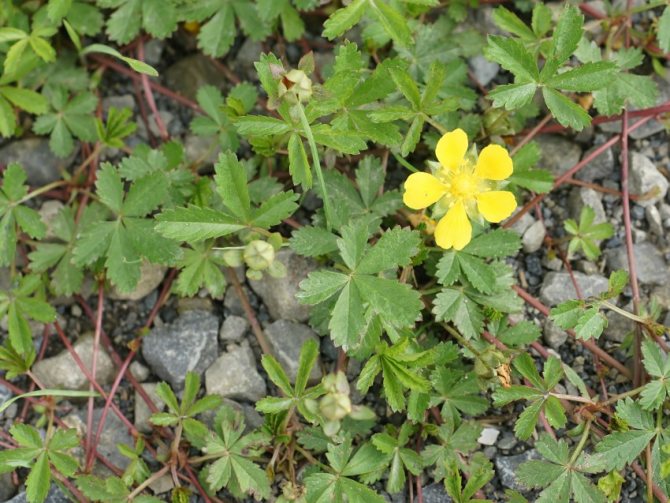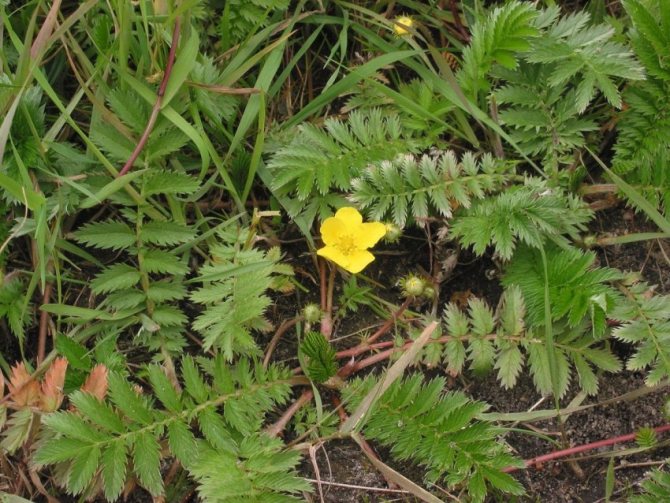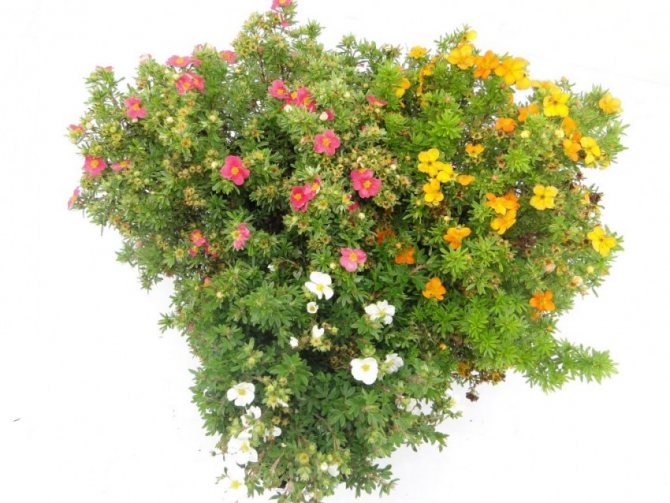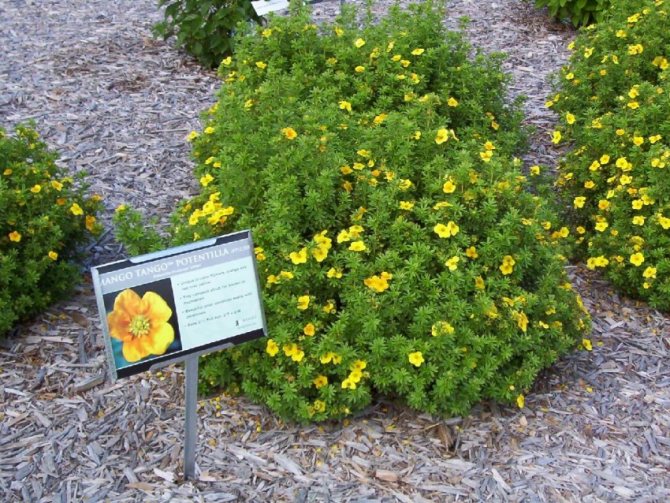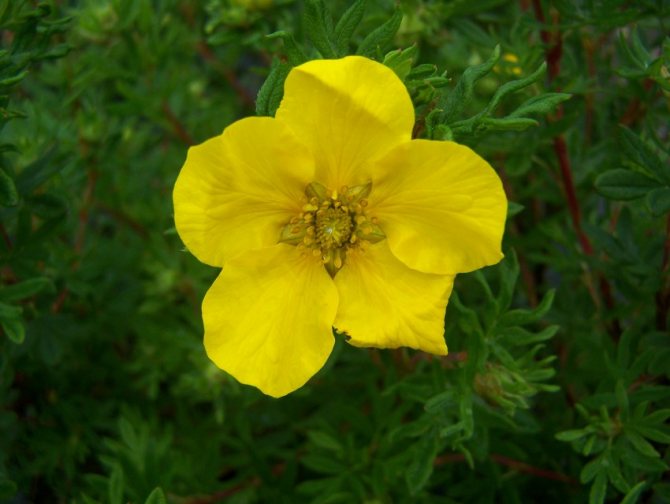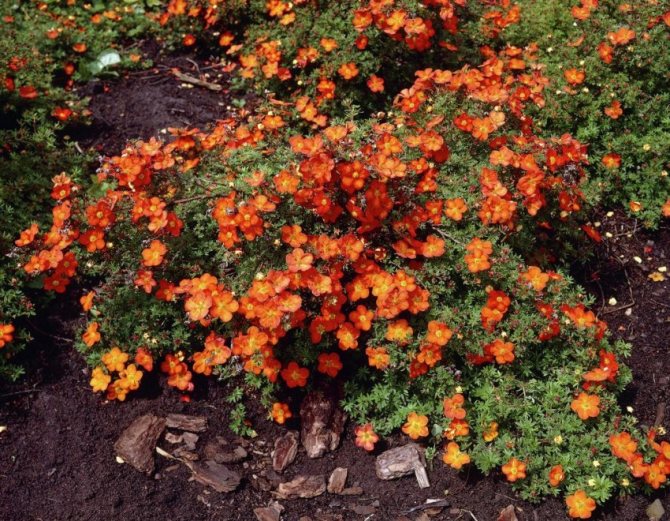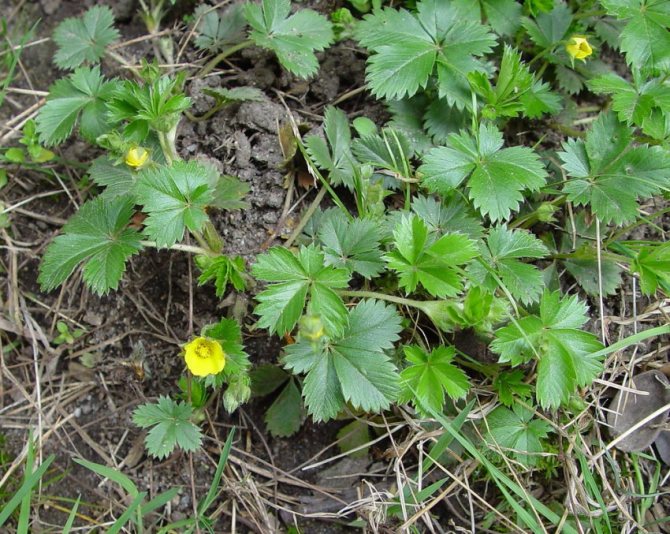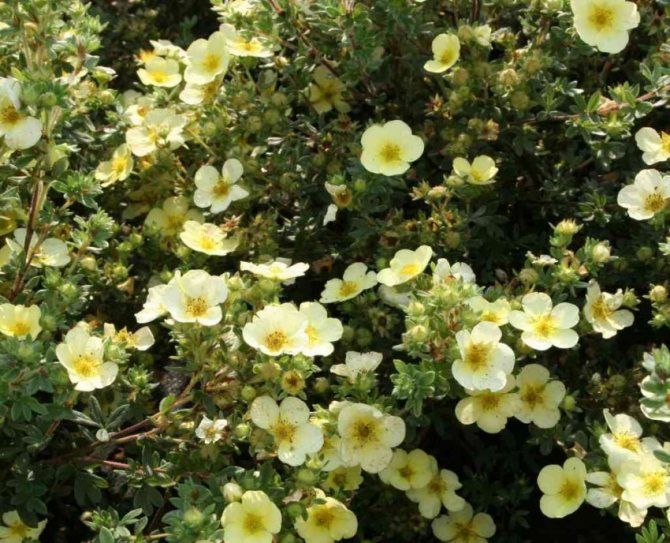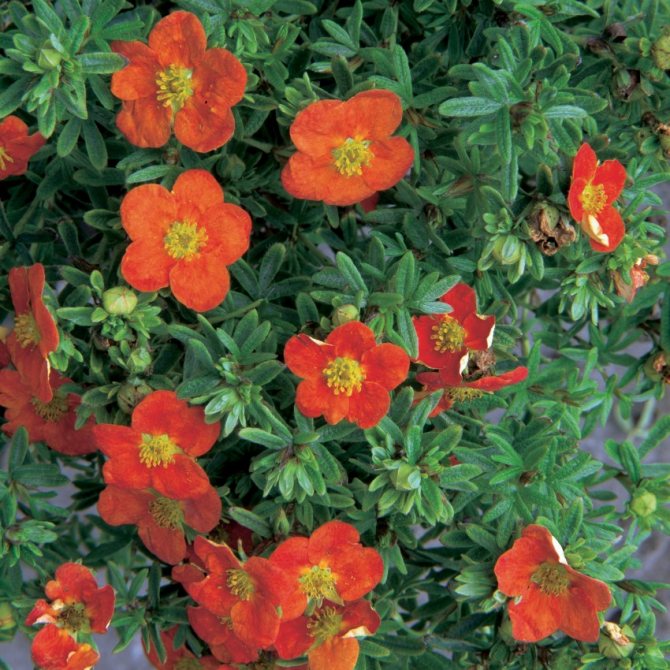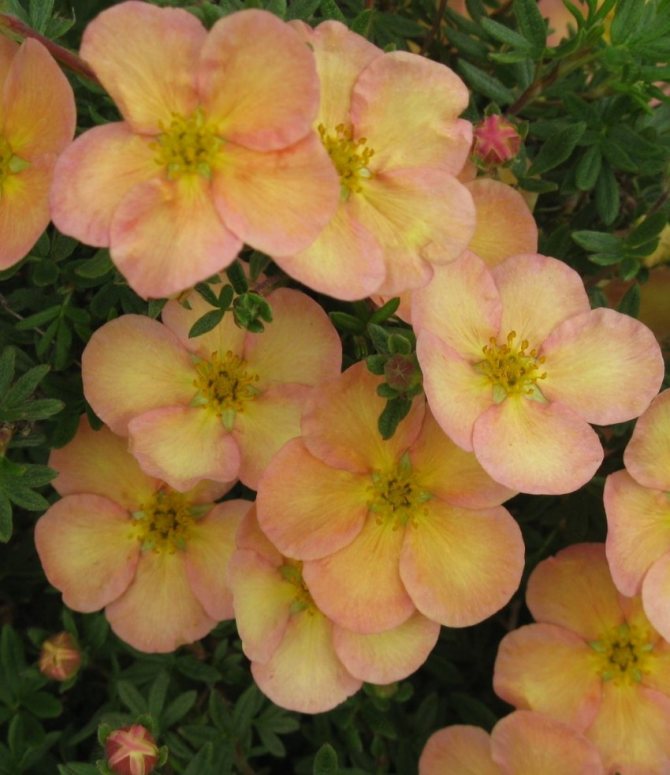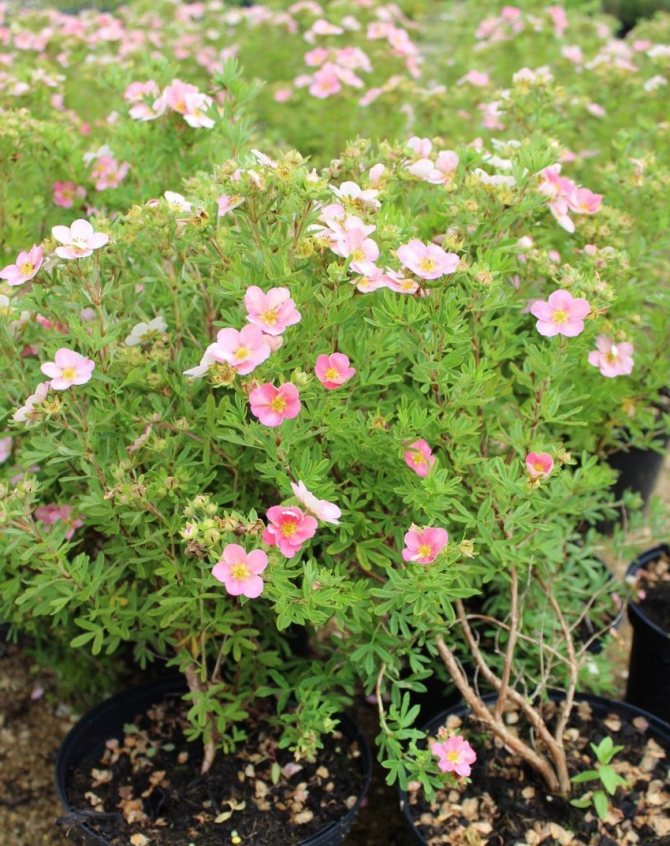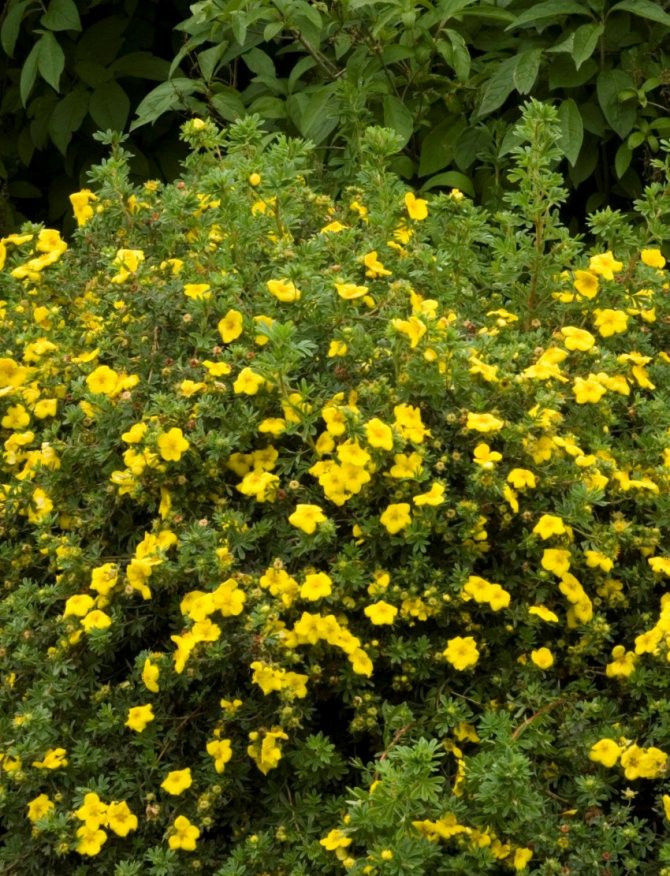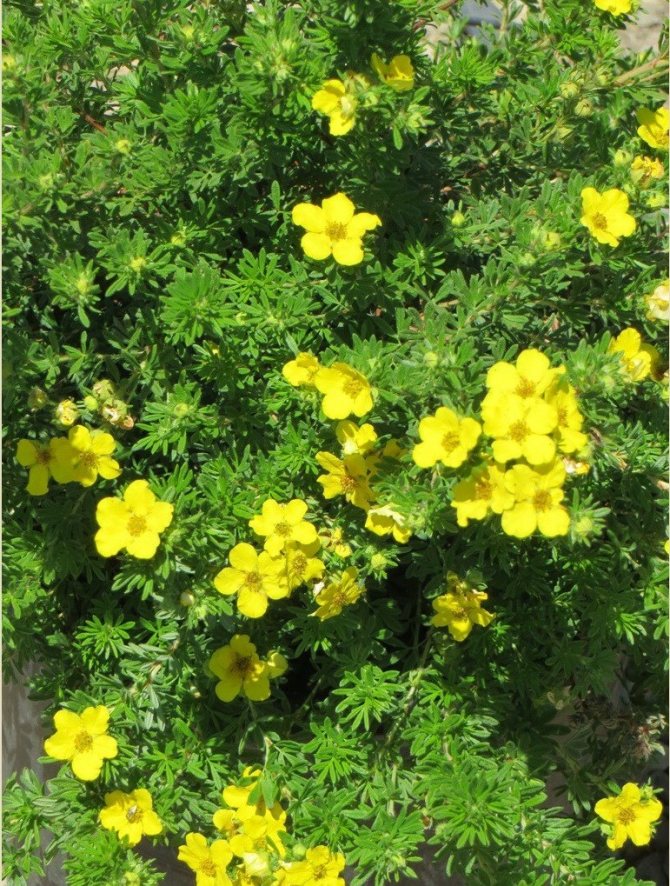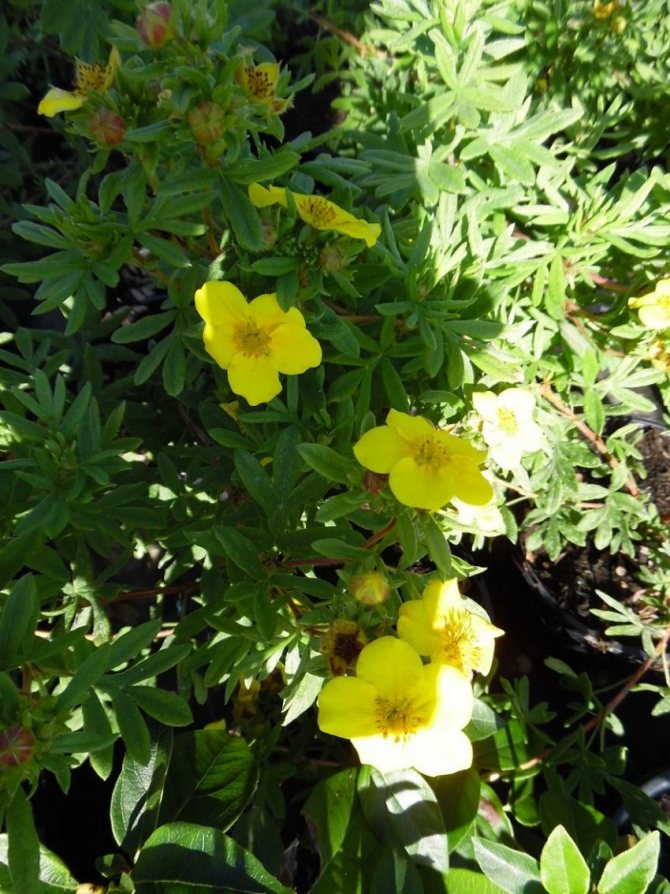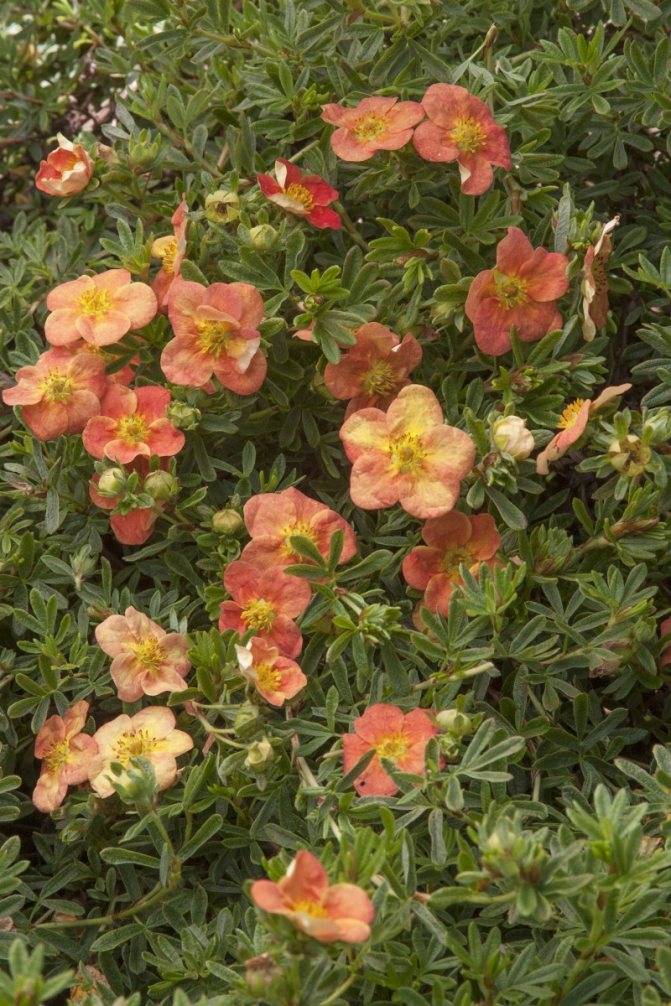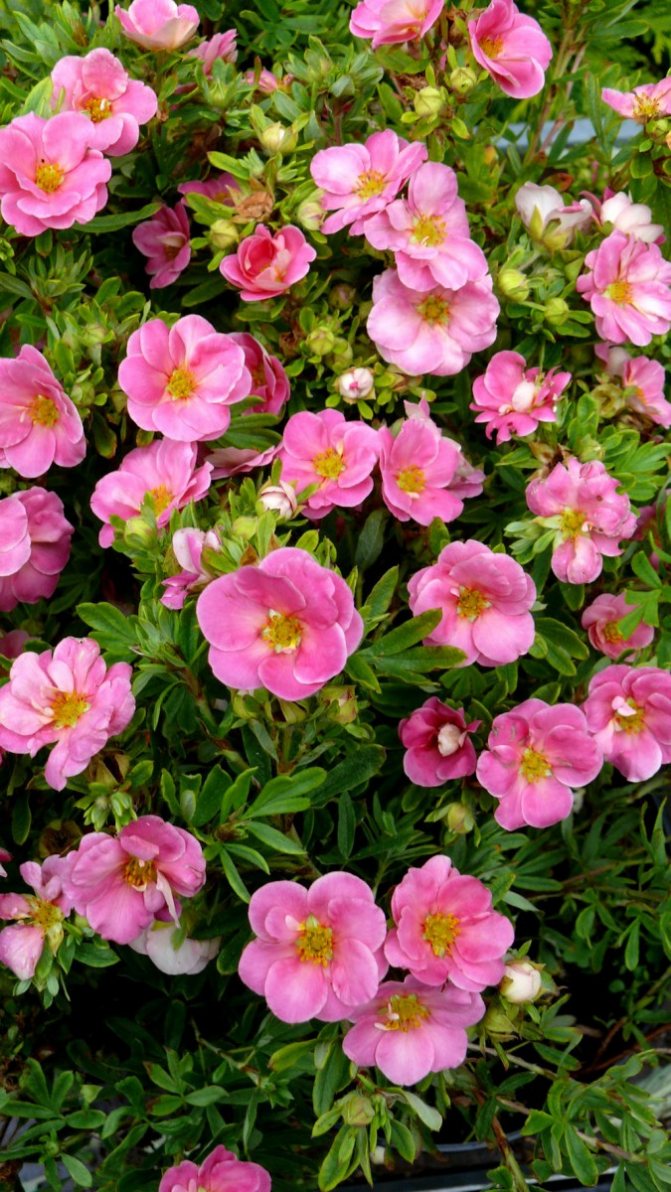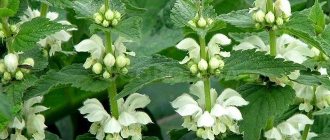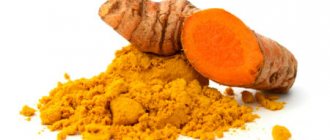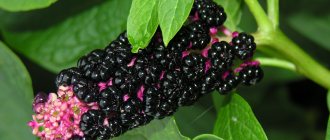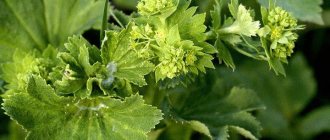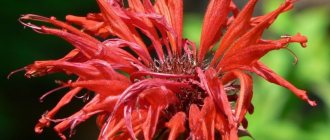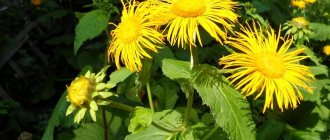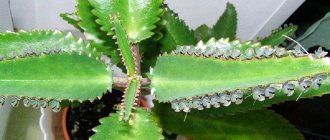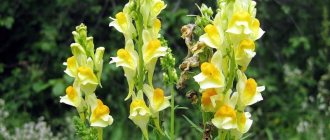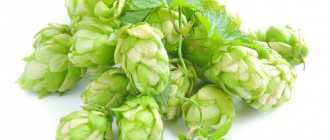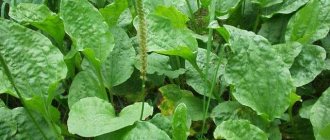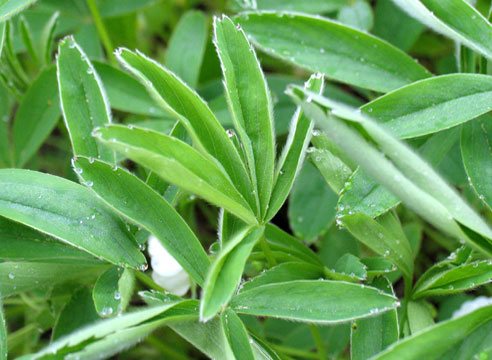
White cinquefoil description
The use of white cinquefoil
White bloodroot (Potentilla alba) is not yet used in official medicine. But in the Belarusian and Ukrainian Polesie, local residents have long and successfully treated thyroid diseases with white cinquefoil. In addition, in Belarusian folk medicine, boils are sprinkled with powder from the dry aerial part. In folk medicine, white cinquefoil is also used for diarrhea, heart and liver diseases, gastrointestinal colic, as an astringent and hemostatic agent. Clinical studies have shown the effectiveness of an aqueous infusion of Potentilla in the treatment of thyroid dysfunction.
Useful properties of white cinquefoil
They are due to its chemical composition, which is still poorly understood. It contains iridoids, saponins, phenol carboxylic acids, flavonoids (quercetin, kaempferol, cyanidin, rutin), tannins. This plant is a treasure of trace elements: manganese, zinc, copper, selenium, iron, silicon, it also contains elemental iodine and salts of iodic acid, which is why it is so useful for thyroid diseases.
White cinquefoil: description
White cinquefoil belongs to the Rosaceae family. It is a perennial herb 10–25 cm high with a powerful black-brown branched rhizome. Silvery pubescent leaves form basal rosettes. Small white flowers up to 3 cm in diameter are arranged in groups of 2-3 on thin peduncles. Blooms in April-June, seeds ripen in June-July. Fruits, dry, wrinkled, hairy at the base. In nature, white cinquefoil is quite rare, often in separate specimens in dry light forests, on slopes, among shrubs. Grows in black earth regions, to the north - much less often. It is included in the Red Data Books of a number of central regions of the Russian Federation. As a result of the predatory harvesting of recent years, as well as the ban on harvesting in a number of regions, white cinquefoil is almost impossible to collect for harvesting in nature. However, it can be grown quite easily in the garden.
Cultivation of white cinquefoil
Lighted places with loose, well-drained, neutral fertile soil are suitable for white cinquefoil. Propagated by sowing seeds and dividing rhizomes. After ripening, the seeds easily crumble, in hot weather they do not set or are formed shrunken, with low germination. But even in ripe seeds, germination is low, germination is uneven, seedlings develop slowly - about 15 years can pass before flowering. The easiest way is reproduction by segments of rhizomes with several buds and roots. Plants can be divided in spring, but it is better in late August - early September. Before planting, it is worth soaking the delenki in a solution of root formation stimulants (Zircon, Kornevin) - this will ensure high survival rate. Further care is easy: regular weeding and loosening of row spacings, watering in dry hot weather.
Diseases of Potentilla white
On acidic soils, the leaves are often rusty - numerous orange pads (fungal spores) form on the underside. Affected leaves turn brown and die; in case of severe infestation (70% and above), the plants may die.For prevention in early spring, plants are sprayed with a 2% solution of Bordeaux liquid. With an interval of 3-4 weeks, the leaves are treated for the first time with Zircon, the second time with a mixture of Bordeaux liquid (0.8%) and Zircon, and at the end of the season with Ferovit.
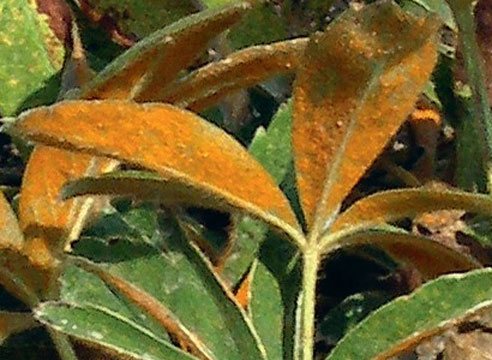

Collection and preparation of white cinquefoil
For medicinal purposes, use the herbaceous part in the flowering stage, with or without roots, or only the rhizome with roots.
Rhizomes are harvested in September-October after the death of the aerial part or in early spring, at the beginning of the regrowth of young leaves. They are shaken off from the earth and small roots, the herbaceous part is removed, washed in water, and cleaned of decayed parts. It is advisable to divide the upper part of the rhizomes with buds and roots into divisions and lay the next plantation, since the rhizome grows worse with age. Plants propagated in this way can be harvested after 3 years. The remaining underground part is washed in water, cut, dried in the open air for several days. The raw materials are laid out in a thin layer on baking sheets or on grates and dried in the open air under awnings in partial shade, in attics with good ventilation or in dryers (ovens) at a temperature of + 50 ... + 60 ° C. The finished raw material breaks easily, does not bend between the fingers.
When harvesting the whole plant, the cinquefoil is dug out at the end of April - June in the flowering phase, two to three years after planting. The roots are shaken off the ground, washed in water, separated from the stems and rotten parts. Raw materials are cut into pieces 3–5 cm long, laid out in a layer of 3–5 cm on clean cloth and dried under the same conditions as the rhizomes, but periodically carefully turned over. It is better to store ready-made raw materials in linen bags or in parchment bags for 1-2 years in a dry and dark place.
It is rather difficult for a layman to distinguish the roots of Potentilla white from other species. Often, the procurers themselves, due to their incompetence, confuse it with other cinquefoil, sincerely offering them to customers instead of white cinquefoil.
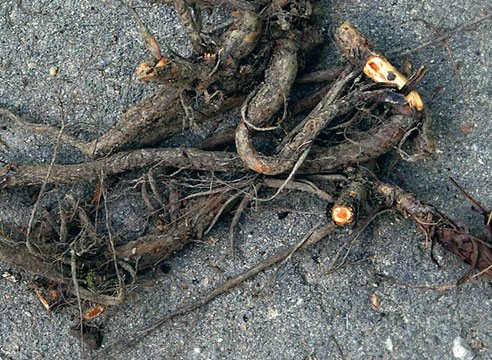

Cinquefoil is not a poisonous plant and there have been no cases of poisoning, however, the plant and its preparations can be used only after consulting a doctor.
Recipes with white cinquefoil for thyrotoxicosis
A decoction of white cinquefoil. A tablespoon of chopped herbaceous part with roots is poured with a glass of boiling water. Cook in a bath for 10 minutes, insist 15 minutes, filter. Drink from 1 tablespoon to 1/3 cup of infusion - depending on the stage of the disease and the condition of the patient's heart - 2-3 times a day 30 minutes before meals. The course of treatment is 1 month. Depending on the severity of the disease, 1 to 3 courses of treatment are carried out with a two-month break.
Alcoholic infusion of Potentilla white. 50 g of chopped roots pour 500 ml of vodka, insist in a dark place for a month, stirring occasionally, drain. Drink 30 drops, diluted in 30 ml of water, 3 times a day 15-20 minutes before meals. After a month of admission - a break of 7 days. Then repeat the course.
White cinquefoil (root)
White cinquefoil is an effective remedy for the treatment of the thyroid gland, diseases of the female and male genital area, including infertility, the consequences of a heart attack and stroke, helps with atherosclerosis, promotes the removal of radiation from the body.
Latin name - Potentilla alba Linnaeus.
What does goose cinquefoil look like?
Cinquefoil goose or goose foot, as it is also popularly called, is a perennial herb that belongs to the Rosaceae family. In addition, it is worth taking into account the fact that there may be other names for the culture, for example:
- convulsive grass;
- Martyn's hand;
- toad;
- goose Dubrovka.
If we consider the appearance of Potentilla goose, then it is worth noting that it has a rather thick and multi-headed rhizome, creeping rooting stems, the length of which can reach 70 cm.In some places, thin whiskers may extend from the stems, which in turn take root into the ground. At the same time, the leaves are basal, intermittent-pinnate, may include from 9 to 20 leaflets. The leaf plate on top has a green tint, below it is silvery-white-felt, the leaves are velvety to the touch.
Stem leaves located in the lower part of the plant are short-petiolate, in the upper part they are reduced, with a small number of them. Shoots, as a rule, emerge from the leaf axils, on which flowers, consisting of 5 petals, are located singly. During the flowering period, flowers of a rich golden-yellow hue appear on the culture, the calyx is double, pistils and stamens are located in it. A distinctive feature is a rather pleasant smell that plants exude. The flowering period lasts from May to the end of August.
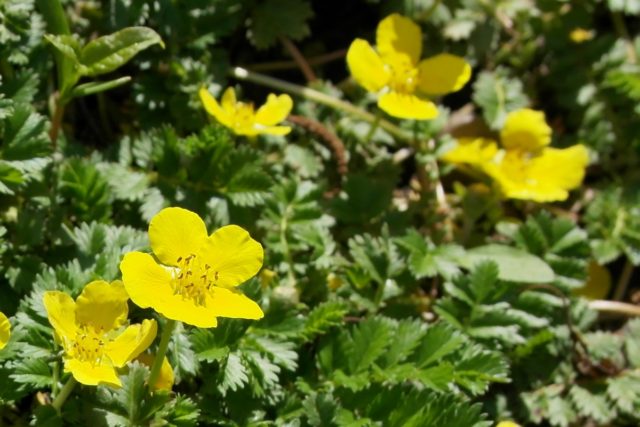

Testimonials
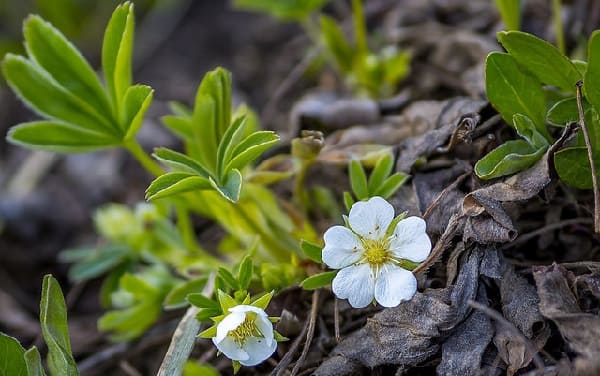

White cinquefoil is an excellent plant for women's health
White cinquefoil - reviews who were treated with grass:
Kristina: In February, they found a cyst on the ovary with an ultrasound of the abdominal cavity. They said there was a possibility that it was functional. A medical friend advised me to drink Potentilla tincture. I drank it for about a month. In May, a new ultrasound scan - there is no cyst, as it was not. The doctor said that Potentilla tincture could well help.
Valeria: After the second birth, the thyroid gland "flew". I became twitchy, crying, my hands were trembling, my heart was pounding. I didn't go to the doctor right away, but when I got there, they almost immediately sent me for an ultrasound scan. She was treated for about a year. I took the pharmacy cinquefoil for 2 months with a break. Comprehensive treatment has borne fruit. However, I had to change the doctor. And the doctor who canceled half of the list of drugs, reviewed not only the prescriptions, but also my nutrition, etc., so he achieved a lasting result in 3 months.
Vera: She treated endometriosis with Potentilla. I will say - I definitely helped. True, I was not strong, but nevertheless. She treated for a long time, several months at intervals.
Where does the cinquefoil goose grow
In order to collect cinquefoil goose, it is important to understand not only how it looks, so that it can be distinguished from other varieties of herbs, but also the places in which the culture grows. This type of grass is considered a Eurasian plant species. That is why galangal is widespread throughout European territory. If necessary, the culture can be found in the Caucasus and Asia. In Russia, it grows throughout the European part.
A large amount of grass can be found in Polesie, in addition, harvesting can be done on the territory of the Urals, Siberia, up to the Altai Territory. Cinquefoil goose grows well not only on sandy soil, but also in swampy places. It requires a lot of sunlight and heat to grow.
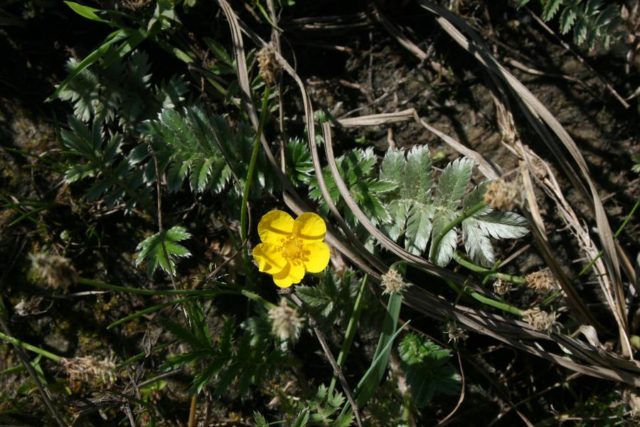

Origin
Plants from the cinquefoil genus are found naturally in all countries of the world. In total, there are about 140 - 145 varieties. Kalgan is found most of all on the Eurasian continent.


Homeland of Kalgan
The main area of this plant is the countries of Western Asia, the European continent, the Transcaucasus.
In our country, galangal is common from Kaliningrad to the Altai region. Moreover, the places of its distribution are moist soil, an open space, illuminated by the sun's rays. It grows well on forest edges, clearings in light forests, hillsides and foothills, wastelands, mountain pastures and in other places open to the sun and fresh air.
The structure of goose cinquefoil
Many recommend that you first study the photo and description of the goose cinquefoil, and then proceed to a detailed examination of the structure of the culture. In order to understand how exactly to distinguish a plant from other varieties and varieties, it is important to understand how each individual part looks like, what useful properties it has. A distinctive feature is the fairly large buds, exuding a strong and at the same time pleasant aroma.
What kind does the rhizome of Potentilla goose have?
If we consider the type of rhizome of Potentilla goose, then it is worth noting that the root system is woody, has a cylindrical shape, thickening is observed in places, but it is uneven,which is also worth considering. Potentilla goose root is small in size, rather short if dug out completely. In addition, the rhizome contains a large number of biologically active substances, among which are:
- tannins;
- sugar; 4
- flavonoids;
- starch;
- essential oils;
- resin;
- the glycoside tormentillin;
- wax;
- red flobafen pigment;
- gum;
- ether tormentol;
- flobaphenes;
- quinic acid;
- ellagic acid.
The root system of the goose cinquefoil has found wide application, as a result of which it is used not only in folk medicine for the preparation of decoctions against various diseases, but also added to the paint to obtain the desired shade, in cooking it is used as a spice.
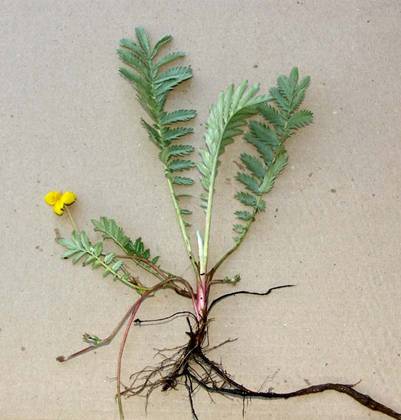

Potentilla goose stalk
As practice shows, goose cinquefoil belongs to the Rosaceae family. This culture is a herbaceous perennial plant. A distinctive feature is considered a creeping stem, the length of which can vary from 10 to 15 cm. If we consider the appearance of the stems, it is noticeable that they are slightly raised upward, in addition, they have an arched shape. It is important to take into account the fact that the stems, as well as pedicels with cuttings, are covered with felt, which has a gray or white tint. In addition, there may be few hairs on the surface. Potentilla goose whiskers move away from the stems, after which they take root.
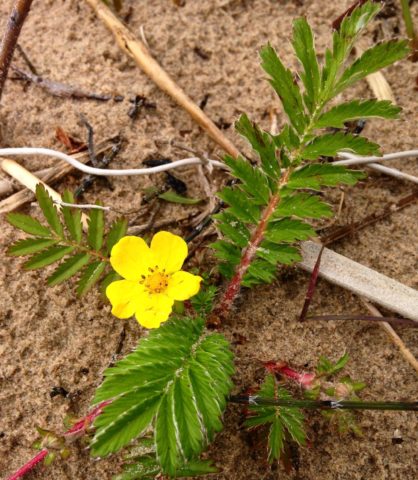

Leaves and leaf arrangement of goose cinquefoil
Cinquefoil goose has intermittent leaves, while they are pinnate. The lower part of the leaf plate is of a silvery-white felt shade. In the lower part of the plant, leaves are located, which, closer to the root system, have rather long petioles, grouped by about 6-7 leaves. In the central part of the stem and on the upper part of the leaf there are about 4 leaves, which have an obovate shape and a narrow wedge-shaped base. As a rule, there are denticles at the top of each leaf, in the amount of 2-5 pcs. The upper part of the lamina is bare or has rather long and sparse hairs. Below the leaves, all the leaves are covered with white felt and painted in a silvery shade.
Flower and inflorescence of Potentilla goose
During the flowering period, the goose cinquefoil has flowers of a rich yellow color. If you look closely at the culture, you will notice that the buds grow to the same size, while they are quite large, which distinguishes this species from other existing varieties. The flowers emerge from the axils of the leaves of creeping shoots, the height of which varies from 10 to 20 cm.If we consider the appearance of the outer sepals, it should be noted that they are incised, the same in length, and have a rather wide ovoid shape. In flowers of Potentilla, goose petals are from 7 to 10 mm long, sepals are several times longer. The number of stamens is about 20-25 pcs., The threads are short.
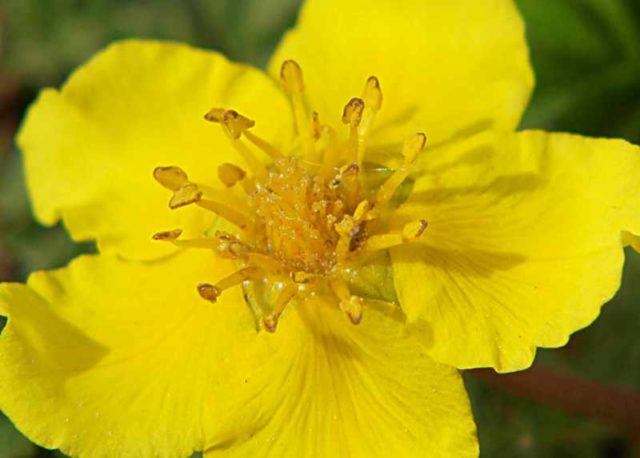

What is in the knots of Potentilla goose
Cinquefoil goose is a plant that densely covers the territory in which it grows, as a result of which it is a solid carpet of a rich green hue. In the process of the growth of the nodes, the process of rooting of sufficiently strong creeping stems is carried out, the length of which can vary from 20 to 80 cm. These shoots, as a rule, emerge from the leaf sinuses.
During strong gusts of wind, the leaf plate turns upward with its lower part, as a result of which there is a feeling as if waves of a silvery shade are running along a carpet of goose gooseberry. That is why people quite often hear how the culture is called silversmith or silvered grass.
Descriptions and other names of the plant, photo
Alpinia galanga, erect cinquefoil, wild galangal, chicken potion, uzik, ovyaznik, stubborn root, dubrovka, mighty, whisper, kurzels, Gao Liang Jian, Siamese ginger.
Kalgan, namely fresh roots, are usually harvested in late summer and early autumn, then its medicinal value is greater.
It has a cylindrical shape, curved in most cases, 5-9 cm long, from one to one and a half centimeters in diameter, and with branches. The surface is reddish-brown to dark brown, also with fine longitudinal wrinkles and gray-brown wavy rings. The internodes are 0.2 to 1 cm long and have rounded root marks on one side. It is difficult and difficult to break. The cross-sections are fibrous and gray-brown or red-brown in color. The stele takes up approximately one third. It has a fragrant smell and a spicy aroma.
What breeds cinquefoil goose
As mentioned above, goose cinquefoil is a perennial plant. In the first year of life, aerial leaf rosettes begin to form from seeds in a culture. After the plant is 2 years old or more, the goose cinquefoil begins to reproduce. In this case, it is important to understand that a plant can reproduce in several ways. Thus, the vegetative method implies reproduction with the help of aboveground rooted shoots. The second method is called sexual and involves reproduction using seeds.
However, it is worth taking into account the fact that the seed method is a secondary method for cinquefoil goose, since the culture takes root quite well due to the presence of creeping aerial shoots, as well as by cutting off root tubers. Due to vegetative reproduction, cinquefoil goose is capable of forming rather dense thickets during growth.
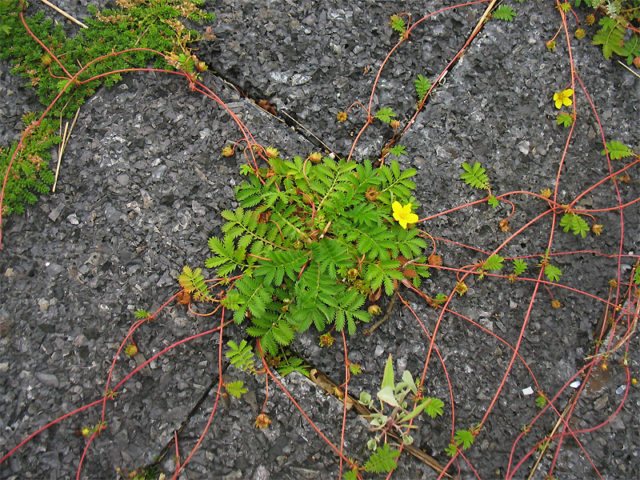

White cinquefoil: use for thyroid, reviews
Cinquefoil is known as a unique natural remedy. It effectively affects the work of the entire endocrine system. Indications for use can be considered thyroxicosis, euthyroidism, goiter, thyroid gland explasia. In case of serious problems in the work of the thyroid gland, Potentilla preparations are prescribed for a rather long period. Patients report significant improvements in well-being, and even cases of complete healing are known. It is important that the non-toxicity of this plant has been officially proven. It can be used as an iodine-containing agent for the prevention of iodine deficiency and general improvement of the body.
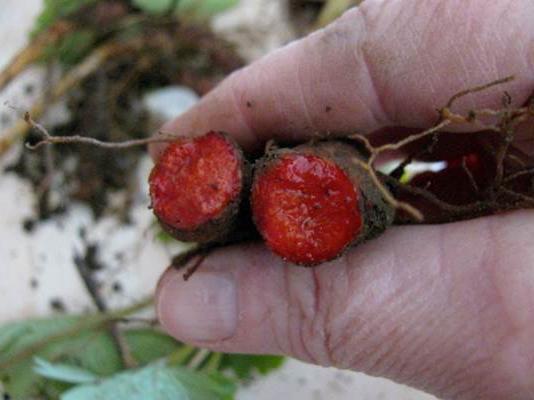

It is noted that the white cinquefoil rather quickly normalizes the balance of hormones, improves the work of many important organs and systems of the body. The use for the thyroid (reviews of patients and doctors speak about this) gives high clinical efficacy, due to the presence of unique biological iodine compounds in it.
Medicinal properties of goose cinquefoil and contraindications
Since cinquefoil goose is a herb with medicinal properties, it is actively used in folk medicine. It should be noted that the plant has the following properties:
- anticonvulsants;
- pain relievers;
- diuretic;
- hemostatic;
- wound healing;
- astringent;
- improve metabolism.
Due to its astringent properties, goose cinquefoil is actively used in the fight against diarrhea, against bleeding, mucous secretions. For a long time, infusions have been actively used for rinsing the mouth, if bleeding of the gums is observed or cracks appear on the tongue.
As practice shows, there are few contraindications for use. Herbal decoctions are not recommended for people who have thickened blood, colitis with atonic constipation. Also, drugs should be taken as carefully as possible in cases where it is planned to remove kidney stones. This is primarily due to the fact that stones can easily get stuck in the ureter.
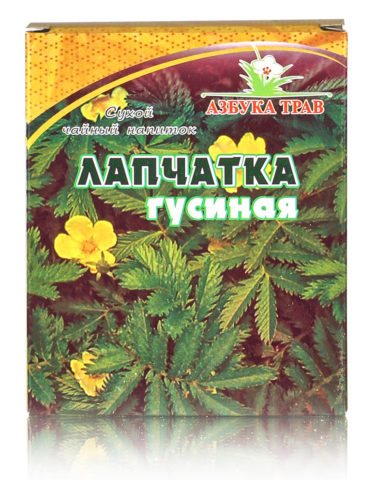

Kalgan and potency
Separately, I would like to note its magical power for male potency.Mostly it acts as a sedative after stress and relieves stress, thereby treating psychological impotence. It also affects blood circulation, which helps the flow of energy to the genitals of men, and flavanoids, in turn, add elasticity. It also lowers blood pressure, helps the genitourinary system and strengthens the immune system. The most common recipe for potency is an infusion from this plant.
Galangal medicinal preparations have the same therapeutic effect in the treatment of female and male sexual disorders.
Collection and procurement of raw materials
Since cinquefoil goose has useful properties and is actively used in medicine, many collect plants for further storage and use. As practice shows, you can use all parts of the culture, including grass, flowers and seeds. It is recommended to engage in harvesting at the moment when the flowering period begins, that is, from the beginning of May and continues until the end of August. In order to dry the collected grass, it is necessary to use a special dryer, in addition, the place must be dark and well ventilated.
You can start collecting seeds after the fruits are fully ripe, namely, in the second half of August. The root system can be dug up in early spring or autumn, only after the aerial part is dry. If the dried herb is properly stored, the medicinal properties can be preserved for several years.
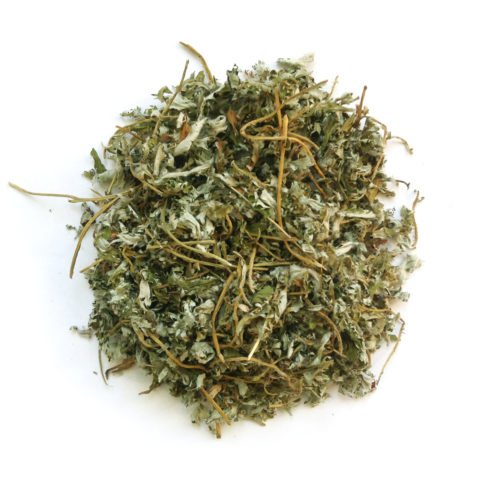

Strokes and heart attacks
White cinquefoil, the use for the thyroid gland (or rather, for its diseases) has been justified for a long time. And its use after such serious and dangerous diseases as heart attack and stroke has recently begun to be practiced. After a person has suffered such diseases, it is very important for him to restore blood circulation and normalize cholesterol levels. And in this case, white cinquefoil comes to the rescue.
The use of drugs based on it is used for high blood pressure, heart rhythm disturbances. In addition, this remedy has a beneficial effect on the elasticity of blood vessels, removes toxins and toxins, and cleanses the blood. In addition, cinquefoil helps to reduce excess weight, as it accelerates the breakdown of fats, stimulates the digestive system and normalizes metabolism.
The use of goose cinquefoil
Before you start taking infusions, you should not only study the contraindications of the goose cinquefoil, but also understand what diseases are worth using.
Thus, tea based on cinquefoil goose should be used for diseases associated with housing and communal services, menstruation, ailments, cramps in the lower body.
Decoctions and infusions are perfect for dysentery, diarrhea, kidney stones, tumors, hernias, gastritis, stomach ulcers, severe pain in the abdomen. Also externally taken for angina, ointments are used in the presence of cracks on the lips.
The sap of the plant is used as a lotion in the presence of open wounds. During a toothache, you can rinse the mouth, which helps to strengthen the gums, eliminate ulcers, bleeding wounds. Perfectly helps to cope with inflammatory processes in the oral cavity.
In addition, many folk healers strongly recommend using Potentilla goose in the presence of tuberculosis, a lowered uterus. As practice shows, decoctions are most often prepared from plant parts.
Kolganov root useful properties
- Nutrition - helps in relieving discomfort caused in the stomach and abdomen due to inflammation or other diseases.
- It helps with motion sickness at sea.
- It also helps in promoting blood circulation in the body.
- When suffering from diarrhea, you can always eat a few pieces of galangal as it provides immediate relief.
Benefits for the skin
- Besides its medicinal values, it is also widely used for skin care.Its juice can be applied topically to treat many skin conditions. It is composed of 40 antioxidants that help protect the epidermis from aging.
- This herb removes toxins from the body and improves blood circulation. This leads to the release of additional nutrients in the skin tissues. The antioxidants present in galangal remove free radicals from it, thereby preserving the youthfulness of the skin.
- The juice is used in healing medicine to treat skin burns. When the juice of this herb is applied to burned skin, it provides relief from pain as well as aids in healing. You can also rub chunks of fresh galangal over your skin 2 to 3 times a day to reduce scars. You will notice a difference in 6 to 12 weeks. Always make sure you are using fresh juice or wedges on your skin.
- It is a powerful antiseptic and cleanser that helps keep skin clean, smooth. This herb heals and heals your skin. Has earned widespread recognition as a natural acne fighter. When applied, it reduces the formation and eruption of acne by cleaning bacteria from the skin.
Benefits for hair
- It has also been used in the treatment of hair and scalp. Plants are widely used in Ayurvedic medicine to treat conditions related to hair and scalp.
- Galangal oil is used for hair growth.
- Applying galangal to the scalp increases blood circulation and thus promotes hair growth. Plant fatty acids are great for fine hair. The juice can be mixed with jojoba oil and applied to thinning hair. This decoction will help you avoid hair loss and promote hair growth.
- It is an excellent remedy for dry and brittle hair as it contains zinc, vitamins and phosphorus that provide firmness and shine.
- It is the best remedy for combating hair loss. Herbal extracts will make your hair stronger and also provide a pleasant scent!
- Galangal extracts can also be used to treat split ends. This condition occurs when they are exposed to pollution, excess heat, and other forms of damage.
- Dandruff is a common problem around the world. The antiseptic properties of galangal will go a long way in getting rid of dandruff for good. The oil obtained from it can be applied to the scalp. Alternatively, you can mix the freshly grated root with olive oil or sesame oil. You can also add lemon juice to the mixture and apply it to your scalp to treat dandruff.
general characteristics
The Latin name for Potentilla goose is Roteptilla anserina L. A perennial herb belonging to the Rosaceae family (Rosaceae), it is distinguished by a thick and short rhizome and creeping "whiskers", the shoots of which can reach a length of 70 centimeters.
Goose grass is widespread throughout the temperate latitudes of the Northern Hemisphere (in the European and post-Soviet space), with the exception of the highlands. She chooses moist soil and bright light, rooting intensively near bodies of water, housing and in places where livestock graze. The plant covers the meadows with a luxurious carpet and is easily recognized by the elongated and smooth green leaves, characterized by pubescent hairs.
During the flowering period from May to August, the plant looks incredibly attractive thanks to the towering and pleasantly smelling yellowish-golden flowers that grow from the axils of the leaves. The melliferous flower consists of five petals, and the fruits of the goose cinquefoil are clusters of dry achenes. Due to its beauty, the plant has found application in landscape design, in particular, it is widely used for decorating alpine slides.
Use and preparation at home
What is the use of Potentilla root in folk and official medicine? How to properly prepare herbal medicines? What medications based on it can be bought in a phyto-pharmacy?
Pharmacy raw materials
- Powder. Shredded root of Potentilla white. The powder is packaged in 1.5 g filter bags. The main indication is thyroid disease. Also taken for gynecological diseases, anemia, to lower cholesterol, remove radionuclides, purify blood, increase immunity.
- Pills. You can purchase a drug with the commercial name "Thyro-Vit". This is a dietary supplement, but it should not be taken without a doctor's prescription. In addition to white cinquefoil, this includes echinacea extract and brown seaweed (kelp) powder. Take 3 tablets 3 times a day with meals. The course of treatment lasts 1 month. The tool is intended for the prevention and treatment of thyroid diseases. It is also a good immunostimulating medicine.
- Liquid extract. Drops "Pyatipal" are used for all of the above diagnoses. The main application is endocrinology.
- Dry root. Shredded raw materials are sold by weight. Unfortunately, cases of counterfeit raw materials have become more frequent on the market, since the herb belongs to rare medicinal species, in many regions it is protected by law. Often, other species of this plant, which do not have such a pronounced thyroid-stimulating effect, are offered under the name "white cinquefoil".
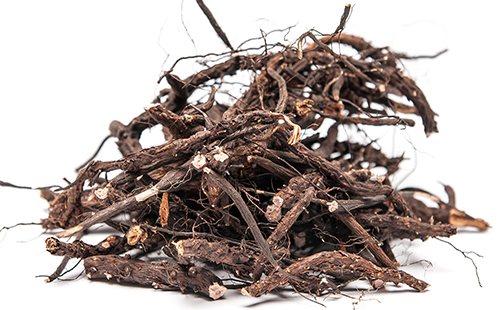

Decoction
The broth is taken for hypothyroidism and other thyroid dysfunctions. It is prepared from crushed roots or powder.
Preparation
- Take 1 tsp. dry raw materials.
- Pour a glass of boiling water over.
- Let it sit in a water bath for 5 minutes.
- Insist 2-3 hours.
It is recommended to keep the broth warm until it cools completely. Take ½ glass 3 times a day 30 minutes before meals. To obtain a concentrated infusion, the root is steamed in a thermos for 8 hours (1 tablespoon of crushed root is taken for 2 cups of boiling water).
Tincture
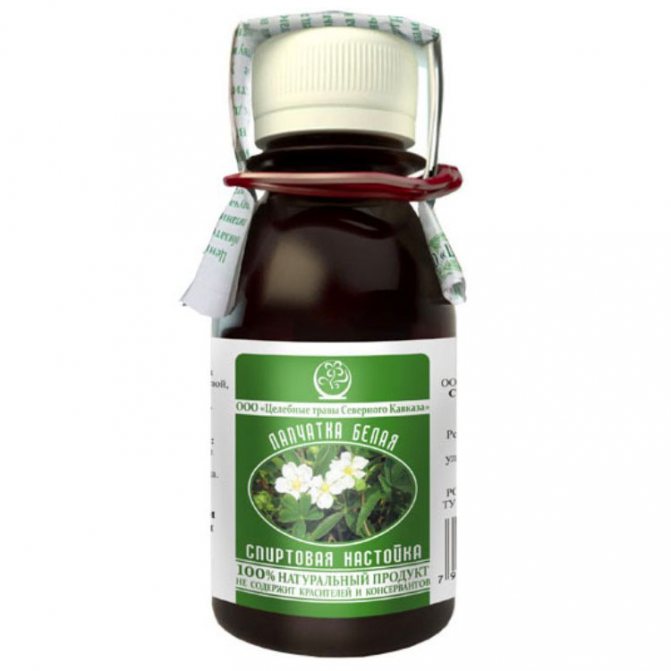

Prepared from crushed roots or powder. The main application of Potentilla tincture is thyroid diseases, gynecological diagnoses (fibroids, cysts, menstrual irregularities). Also, the drug has a tonic, immunostimulating effect. It is useful to drink the tincture prophylactically to strengthen the body's defenses.
Preparation
- Take 50 g of dry crushed root.
- Pour in ½ liter of vodka.
- Insist 3 weeks in a dark place.
- Strain.
Take 30 drops 3 times a day 30 minutes before meals. This is the average dosage. It can vary depending on the diagnosis and thyroid dysfunction, as prescribed by the doctor. The course lasts a month, after which they take a break for a week and undergo a second course.
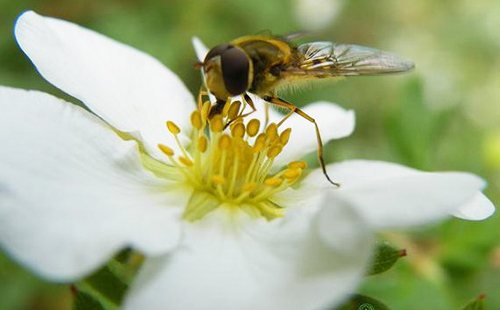

Application in men, women, children
- For men. Used to increase potency. The root helps with adenoma, male infertility. It also has a good effect on the nervous system, relieves fatigue, tones the entire body.
- For women. Menstrual irregularities can be associated with hormonal disorders in the thyroid gland. Therefore, so often when the cycle fails, the appearance of functional cysts, uterine bleeding, the gynecologist gives a referral to the analysis of thyroid-stimulating hormone, thyroxine, triiodothyronine. White cinquefoil in complex therapy helps with such diagnoses - uterine fibroids, ovarian cysts, prolapse of the uterus.
- For kids. There is no age limit in the official instructions. According to some herbalists, the herb can be used in children, but in strict dosage and under medical supervision. The danger lies in the impact on the unstable hormonal system. Although it is noted that it is in adolescence in boys and girls (with a hormonal surge) that decoctions of this plant can even out hormonal surges, normalize weight, and improve the condition of hair and skin. However, there is no scientific confirmation of this information.
Reviews and security measures
There are quite a lot of positive reviews about white cinquefoil not only among patients, but also among doctors of official medicine.
- Since the middle of the twentieth century, in Soviet pharmacology, this medicinal plant has been actively studied: laboratory experiments and clinical studies have been carried out.
- It was found that white cinquefoil with thyroid gland is an effective and safe herbal preparation.
- It is often used in endocrinology for hormone replacement therapy.
- The remedy is indicated for both increased and decreased thyroid function.
- Despite the fact that this plant is considered the most effective for diseases of the thyroid gland, without establishing an accurate diagnosis and prescribing a doctor, it cannot be consumed.
- When combined with iodine preparations, an overdose is possible.
- Therefore, the course and dosage of the herb must be agreed with the endocrinologist.
Also, white cinquefoil has proven itself well in the treatment of female diseases, as an antiseptic, wound healing agent.
More about the use of Kuril tea
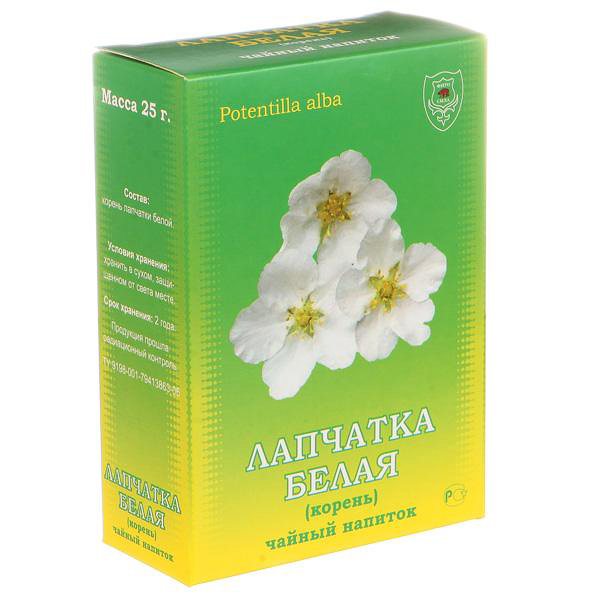

The widespread use of Kuril tea is explained by the high content of tannin, catechin, tannins, microelements, vitamins C and A. Teas, decoctions, infusions, and alcoholic tinctures are prepared from leaves and flowers. Residents of the Far East often drink weak herbal decoctions instead of tea. The drink tastes good and tones up well. With a higher concentration of raw materials, medicinal drinks are obtained. For what diseases is it useful to drink Potentilla (Kuril tea)?
- Gastrointestinal infections. Helps with bacterial and viral infections of the gastrointestinal tract - rotavirus, staphylococcus, dysentery, cholera. Normalizes digestion, it is useful to drink with diarrhea, dysbiosis, intoxication in case of poisoning.
- Gynecology. It is taken internally and externally (in the form of douching) with inflammation of the vagina, pathologies of the cervix.
- Colds, SARS, flu. The remedy is taken for sore throat, general malaise. Increases immunity, promotes rapid recovery.
- Nervous system. Kuril bush tea is a popular remedy for depression and neurosis, it helps with physical fatigue, mental overload.
- External use. Strong tea treats wounds and burns, heals skin cracks well, helps with allergic rashes.
Kuril tea is contraindicated during pregnancy due to the load on the urinary system. Also, it is not recommended to drink it with low blood pressure, exacerbation of chronic diseases of the gastrointestinal tract and kidneys.
Potentilla root is a plant of first choice for thyroid disorders. The thyrotropic pharmacological action of this drug has been scientifically confirmed. Also, this type of Potentilla, like Kuril tea, is often used in gynecology and gastroenterology. The herb is useful for diseases of the heart, blood vessels, joints, it is drunk with neuroses. Outwardly used to treat wounds, cracks, burns, oral cavity.
Collection and procurement
All parts of the plant, including grass, flowers, seeds, and rhizomes, are used in medicine. The collection of goose grass begins with the beginning of its flowering in May and lasts until its completion in August. The collection of grass is carried out away from roads. They dry it in the shade or in special dryers, as well as in well-ventilated rooms.
Potentilla seeds begin to be harvested after the fruit ripens, around the end of August, and the rhizome is dug up in early spring or autumn, after the ground part of the plant has dried.
Under proper storage conditions (in boxes, in well-ventilated rooms), the fees do not lose their medicinal properties for two years.
Preparation of medicinal raw materials
The main medicinal raw material of this plant is the rhizome. It is necessary to harvest it either in the spring or during September. The root is dug out, then it should be cleaned of unnecessary impurities, earth particles using special brushes with stiff bristles and rinsed thoroughly in cool running water.Sometimes it is not possible to rinse the roots well - particles of earth may remain in small cracks. To completely get rid of these unnecessary particles, after drying, the roots are shaken on the grates to remove all the dirt remaining inside the rhizome.
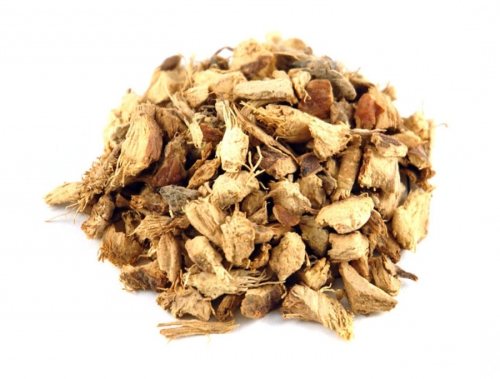

Harvested root
This medicinal raw material should be dried quickly, therefore, to dry, the roots are laid out in a thin layer in the sun or in special dryers. You can dry raw materials in a Russian oven.
The dried roots are stored in a glass container with a lid. Extracts from galangal are added to tea, tinctures and decoctions are prepared, ground into powder (you can use a coffee grinder).
Chemical composition and calorie content
Goose cinquefoil is distinguished by a unique composition of biologically active components, the full spectrum of which has not yet been fully studied. In addition to vitamins and trace elements, in particular, choline and zinc, organic and fatty acids, essential oils and glycosides with carbohydrates (glucose, fructose, rhamnose), as well as bitterness are found in the plant.
The leaves of the plant contain more than 220 mg of vitamin C, up to 30 mg of carotene, as well as ellagic acid (coumarins), tannins, flavonoids and leukoanthocyanidins.
Potentilla rhizome is also rich in ascorbic acid (more than 105 mg). The roots of the plant contain pigments and quinic acid, as well as a sufficiently large amount of protein and starch, which determines its use in addition to medicine in cooking. The presence of tannins (up to 25%) in the leaves and rhizome of Potentilla, as well as flavonoids, allow the plant to be used in leather tanning and as a dye.
Nutritional value of contraindications galangal
Kalgan is a good source of fiber. It is rich in iron, sodium, vitamin A, C, flavonoids, phytonutrients, emodin, beta-sitosterol, quercetin, and galangin. Here are some of the popular nutrients found in this herb.
At the end of the day, you must also remember that galangal is a plant that can cause allergies. If you are prone to allergies or sensitive skin, you should take precautions before applying it on your skin. Galangal infusion should not be used during pregnancy. Overdose can cause vomiting and abdominal discomfort.
69
Use in medicine of the peoples of the world
The healing properties of goose cinquefoil have long been successfully used by traditional healers of different nations in the treatment of a huge number of ailments.
Tibetan and Mongolian doctors were well aware of the antiseptic properties of this herb, with which they treated gastrointestinal diseases, diarrhea and dyspepsia, as well as acne and uteroptosis.
Bulgarian doctors cured ulcers and catarrhs of the stomach, herpes with goose grass and used it to treat dysentery, female diseases and in severe pregnancy.
Karelian doctors used convulsive herb to treat a whole bunch of diseases. It was used to treat sore throats and cracked lips, tuberculosis, gastritis, migraines, arthritis, rheumatism, and for bruises and snake bites.
In folk medicine in Hungary, they knew about the property of the toad to purify the blood and help with depression, neurosis and epilepsy, as well as with headaches and toothaches, edema and joint diseases.
German healers offered herbal decoctions for diarrhea and colic, muscle cramps, various kinds of internal bleeding and painful menstruation.
Ukrainian healers have used goose grass to treat tetanus.
The Indians used this plant to treat jaundice.
Bulgarians, Hungarians and Romanians have successfully used cinquefoil to treat the endocrine system.
Traditional medicine recipes
As noted above, Potentilla is widely used in folk medicine as a component of decoctions and infusions for the treatment of a wide variety of ailments.
With diseases of the gastrointestinal tract
Pour 20 g of chopped rhizomes and herbs with a liter of boiling water. Filter after an hour.Take ¾ cup three times a day. The duration of the course is from 14 days to a month.
To heal wounds
Boil 20-30 grams of chopped herbs in 250 ml of water for twenty minutes. Filter the finished mass and use for compresses. It can also be used to rinse with bleeding gums.
With tuberculosis
Pour 20 g of grass with 200 ml of water. Boil over low heat for a quarter of an hour, and filter after two hours. Take three times daily before meals.
With urolithiasis and gallstone disease
Mix equal amounts of fresh Potentilla juice with fresh green rye juice. It should be taken three times a day, 15 ml.
With uterine bleeding
Pour 10 g of Potentilla with a liter of boiling water. Simmer in a water bath for a quarter of an hour. Take half a glass three times a day. Please note that this is an adult dose. Young girls should take 50 ml.
For painful periods
Pour 5-10 g of seeds with 250 ml of milk. Boil for five minutes, then filter. Take half a glass twice a day.
With diarrhea
Pour 10 g of crushed rhizomes with 250 ml of boiling water. Boil over low heat for a quarter of an hour. Let it brew for twenty minutes, then filter. Take two tablespoons four times a day.
With increased pressure
Pour 30 g of ground stems, roots and flowers of Potentilla with a glass of boiling water. Filter after eight hours. Take two-thirds of a glass three times a day, before breakfast, lunch and dinner.
If the hypertension is still at the initial stage, another decoction should be prepared, which will help stabilize the pressure indicators. 10 g of crushed leaves and stems of grass, pour 200 ml of boiling water. After eight hours, filter and take half an hour before breakfast and before dinner, 100 ml each.
Usage history
This plant has been known to man since ancient times. In the 15th century in Italy, the famous treatise "On the powers of herbs" was published, which describes the white cinquefoil - the use, healing properties of the plant. A medieval author writes that this herb is beautiful, but very bitter in taste, heals various injuries well, heals burns quickly, helps well with abdominal pain and even with snake bites.
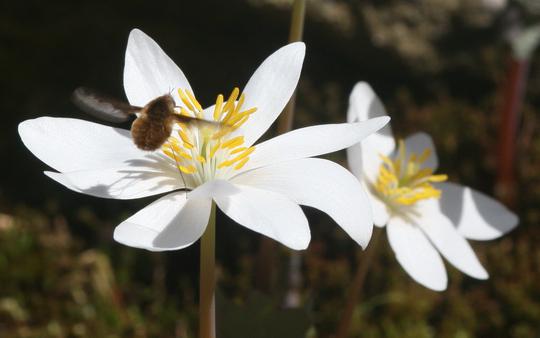

Healing properties
The popularity of goose grass among healers of different nations is due to the wide range of useful properties of this plant.
Due to its antispasmodic and analgesic properties, the extract of this herb is able to reduce the tone of smooth muscles. This allows him to relax the muscles of the esophagus and uterus, as well as the biliary tract. Therefore, preparations based on this plant are useful for intestinal colic, exacerbation of gastritis and peptic ulcer disease, colitis, as well as for painful periods.
It is difficult to overestimate the importance of Potentilla as an antiseptic and wound-healing agent. Preparations based on this herb have proven themselves well for the treatment of a number of dermatological problems: furunculosis, eczema, acne. Compresses with a decoction of this plant promote healing of purulent wounds, reduce pain in case of bruises. Also, a decoction of convulsive herb is useful for bleeding gums. It can be used as a gargle to neutralize bad breath and also to keep infection from spreading.
Due to the bitterness present in its composition, cinquefoil stimulates the secretion of gastric juice and bile. Therefore, it is useful for liver diseases and stones in the gallbladder.
Tannins endow cinquefoil with hemostatic properties. Therefore, a decoction from the rhizome of this plant is useful for heavy periods, as it reduces blood loss.
A decoction from the rhizome of this herb helps with diarrhea due to its astringent properties.
Cinquefoil is a powerful diuretic.A decoction from it is recommended to be used for cystitis, nephritis, the presence of sand in the kidneys. In addition, due to the elimination of excess fluid from the body, Potentilla effectively fights edema.
Baths with a decoction of Potentilla have excellent tonic properties, help with fatigue, but at the same time help to relax and get out of the stress state with insomnia.
Cinquefoil is often called a seizure herb because it helps with seizures of various etiologies. It is often used to prepare a decoction for the treatment of nervous suffocation and calf muscle cramps. The herb is one of the components of the so-called "anticonvulsant collection", which is used for bathing babies.
Description of the medicinal plant
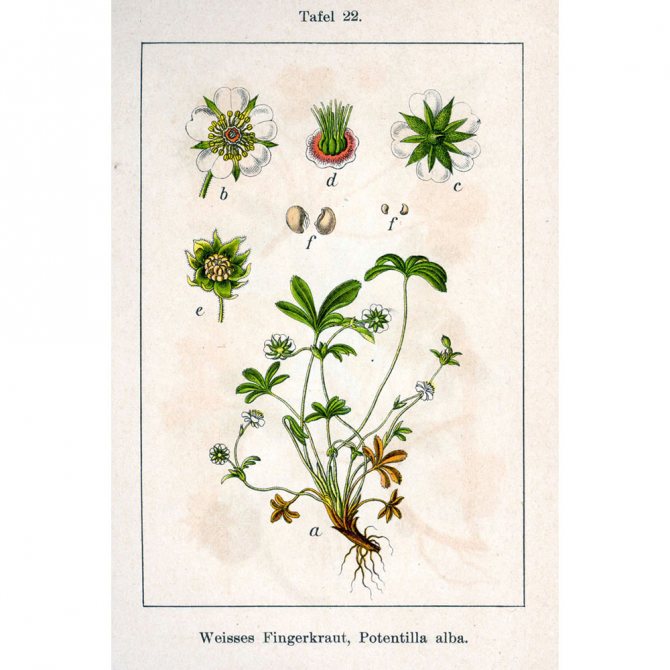

White bloodroot. Botanical illustration by Jacob Sturm from the book "Deutschlands Flora in Abbildungen", 1796.
What is this type of medicinal plant so famous for? And why is it so difficult to find the real root of Potentilla white? What diseases is the herb effective for? What do you need to know about the contraindications for this plant?
Area
This type of Potentilla is found in Central Europe. The grass does not grow in the Scandinavian countries and the UK. Its northern border is Germany, the western border is the Ardennes Mountains in Luxembourg, France, Belgium, the southeastern border is Serbia, Montenegro, Croatia, Slovenia, Italy, Bulgaria. More common in Ukraine and Belarus. Where does white cinquefoil grow in Russia? It takes root well in the southern regions and in the Volga basin. Most often, this species can be found in meadows, open, well-lit glades, in copses, on overgrown slopes.
The white cinquefoil plant belongs to endangered species, which is associated with the intensive development of forestry and agriculture. This species is listed in the Red Book of Belarus and Germany, and is also protected by law in such regions of Russia - Ryazan, Moscow, Smolensk, Lipetsk. Therefore, the grass is so difficult to find and prepare. In some regions of Russia (for example, in Bryansk), this species is cultivated industrially in order to replenish the raw material base.
Botanical characteristic
What does this perennial herb look like?
- Height. It can be from 10 to 25 cm.
- Rhizome. Powerful, thick, unbranched, 10 to 15 cm long.
- Stems. They have few leaves, thin and short, branchy at the base.
- Leaves. The root leaves are brown, with long petioles. Stem - oblong-lanceolate, with sharp denticles, wedge-shaped tapering.
- Flowers. They grow on long stalks, white with five wide, notched petals.
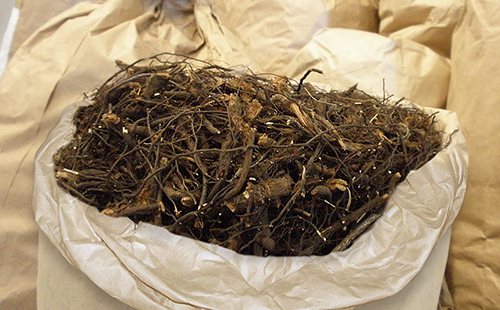

Blank
In folk medicine, the herb is white cinquefoil and the rhizome. However, the aerial part does not affect thyroid-stimulating activity, which is important in the treatment of the thyroid gland.
- Collection time. Flowers can be harvested during the flowering of the plant - from May to June, leaves and stems - throughout the season. The root is dug up in early spring or late autumn. It is broken off and only the rhizome is left (among the people, the rhizome is often called the root). It is important to know that beneficial substances accumulate in the underground part of the plant in the fourth year of the growing season.
- How to harvest at home? This type of Potentilla grows for a long time. For example, it takes 10 years of vegetation to get a 20 cm long rhizome. Seed propagation is slow, they do not sprout immediately. In home gardens, it is recommended to propagate this plant by cuttings that can be planted in spring or autumn. One cinquefoil rhizome can produce two to three dozen cuttings.
- Drying conditions. All parts of the grass are dried in natural conditions - on verandas, attics, under awnings, where there is access to fresh air.
- Storage. Dry raw materials must be protected from dampness and sunlight. Usually dry rhizomes are stored in wooden boxes, glass jars. Shelf life is 2 years.
Healing action
Pharmachologic effect:
- anticarcinogenic;
- tonic;
- diuretic;
- thyrotropic;
- corticotropic;
- adaptogenic;
- sedative;
- neurotropic;
- cardiotonic;
- anti-atherosclerotic;
- venotonic;
- antibacterial;
- immunostimulating;
- wound healing.
Such a wide spectrum of action is due to the chemical composition of the plant. It found a lot:
- micro- and macroelements: magnesium, iron, copper, silicon, zinc, potassium, phosphorus, selenium, iodine and anion of iodic acid, silver;
- flavonoids;
- phenol derivatives;
- tannins;
- saponins.
The rhizomes contain a valuable substance - albinin with thyroid-stimulating action. Thanks to albinin, the plant is widely used in endocrinology.
List of indications
What are the indications for the use of this medicinal plant?
- Treatment of the thyroid gland with white cinquefoil. This is the main use of the herb (rhizomes), since it contains a lot of iodine and minerals that normalize hormone production and metabolism. Clinical studies were carried out that confirmed the therapeutic effect of the herb for hyperthyroidism, thyrotoxicosis, thyroid hyperplasia, multinodular goiter and other diagnoses. Prophylactically prescribed in regions where iodine deficiency is observed.
- Benefits for the joints. Relieves inflammation and pain with gout, osteochondrosis, rheumatism, cleanses the blood well, lowers cholesterol levels.
- Digestive system. Helps with gastrointestinal infections due to its antibacterial properties. In particular, it helps with dysentery. It is useful to drink infusions for chronic inflammation of the stomach, liver and intestines, peptic ulcer disease. Relieves colic, spastic pain, normalizes digestion.
- Urinary system. The herb has a mild diuretic effect, so it can be prescribed for inflammation of the kidneys and bladder.
- The cardiovascular system. The plant has a beneficial effect on the work of the heart, helps with tachycardia, cardiac dyspnea. Prescribed in the rehabilitation period after a heart attack and stroke. The herb normalizes blood pressure in hypertension, prevents the development of atherosclerosis.
- External use. Infusions in the form of compresses and lotions are applied to wounds, to painful joints. Powder is sprinkled with ulcers, abscesses, and other skin inflammations. Decoctions and infusions are used to treat cracks in the corners of the mouth. It is used as an antiseptic in otolaryngology and dentistry - for rinsing the throat and mouth, with bleeding gums, bad breath.
Shrub cinquefoil, or Kuril tea, yellow cinquefoil.
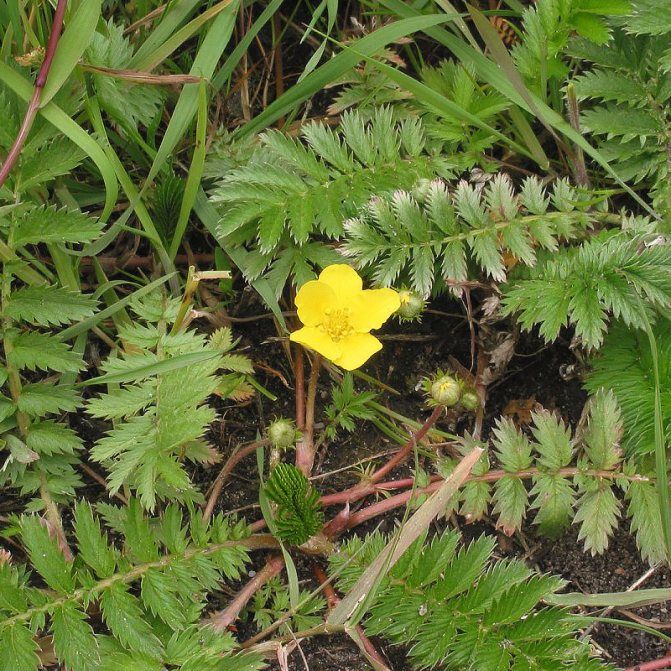

Cinquefoil goose, or goose foot, goose grass.
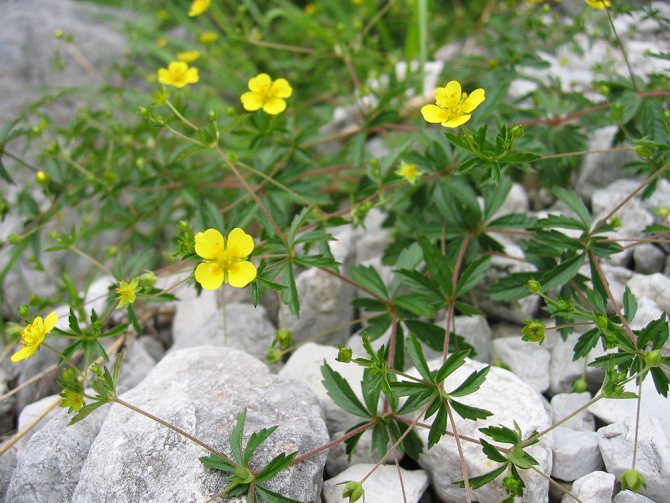

Erect cinquefoil, or galangal.
Other medicinal types of Potentilla
Cinquefoil is an extensive genus of plants from the rose family. There are about 180 species in the genus. Most of them grow in the temperate climates of the northern regions. What types are most often used for medicinal purposes?
- Shrub cinquefoil, or Kuril tea, yellow cinquefoil. The distribution area is the Far East, Japan, China, Eastern Siberia, mountains in Central Asia, Altai and Sayan. Loves mountainous areas, grows on stone deposits, in the tundra, can also be found in flooded lowlands, along rivers. It grows for about 30 years, can reach a height of 150 cm. Kuril tea has the following medicinal properties: tonic, anti-inflammatory, immunostimulating, sedative, diuretic, antiviral and others. Cinquefoil is also grown as an ornamental shrub. Bred varieties with white, pink, orange flowers.
- Cinquefoil goose, or goose foot, goose grass. Shoots, flowers and leaves have medicinal value. It is popularly known as an effective gastric medicine, good for colic and diarrhea. The tannins in the herb help with inflammation of the mucous membranes and gums. Also, the plant is widely used in gynecology, relieves abdominal cramps during painful periods, belongs to strong anticonvulsants.It is known that ruminants eat goose grass, which prevents digestive upset.
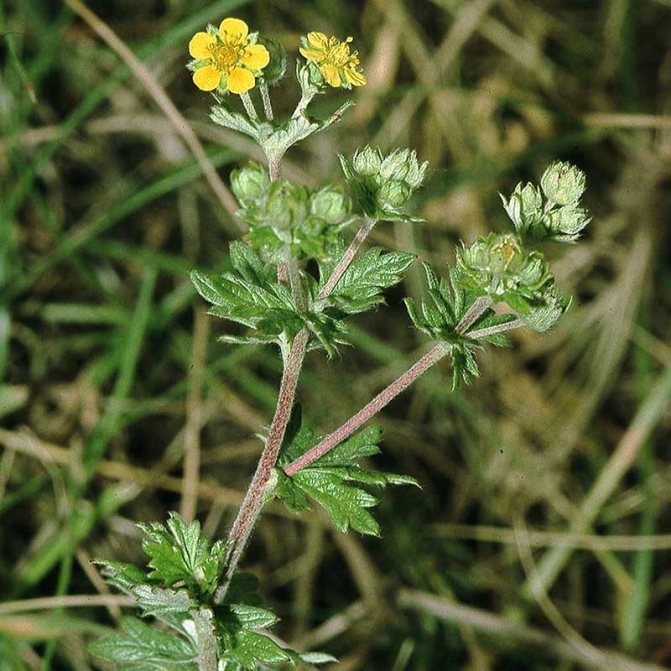

Silver cinquefoil.
Silver cinquefoil. Distribution area - all of Europe, including the northern countries (Finland, Norway, Sweden). In Russia, it is found not only in the European part, but also in Siberia, Altai. Also, the grass grows in Kazakhstan, Mongolia, China. The herb is taken for inflammation of the gastrointestinal tract - gastritis, colitis, enterocolitis, cholecystitis, cholangitis, hepatitis, dysentery, stomach ulcer. Decoctions from it are prescribed for vascular inflammation, rheumatism, gout. Topically used for eczema, cracks, wounds, burns.
- Erect cinquefoil, or galangal. It is valued for hemostatic, astringent, disinfecting, choleretic, wound healing properties. Read more about erect cinquefoil and its use in traditional medicine in our other article.
All plant species are distinguished by a high content of tannins, bitterness, flavonoids.
What are the contraindications for Potentilla white? Cannot be taken orally with low pressure, acute ulcerative colitis, blood clotting disorders, exacerbation of urolithiasis and all gastrointestinal diseases, individual intolerance. Also, the herb is prohibited during pregnancy and lactation. In case of an overdose, side effects from digestion are possible - nausea, vomiting, constipation or diarrhea.
Contraindications for use
Since cinquefoil is a herb with high biological activity, its use should be approached responsibly.
First of all, due to the property of the plant to lower blood pressure indicators, hypotensive patients should use it with caution. Also, the use of Potentilla is not recommended with increased blood clotting.
Those who have been diagnosed with kidney stones should be very careful to use Potentilla products, since large stones can get stuck in the ureter when they exit.
In addition, goose grass can irritate the gastric mucosa, so you should refuse to use it in any form in case of exacerbation of gastritis.
Many are interested in the answer to the question of whether it is possible to take preparations based on Potentilla during pregnancy. Formally, there is no ban on the use of decoctions and infusions of this herb. However, you should first consult your doctor, as goose grass is a plant with high biological activity.
But it is better for nursing mothers to refuse from Potentilla preparations so as not to provoke an allergic reaction in a newborn.
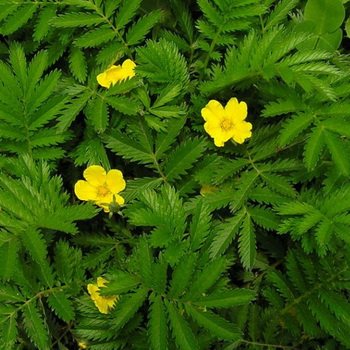

According to Slavic legends, goose cinquefoil has miraculous powers - it is not only able to heal from many ailments, but also to strengthen the strength of the spirit. So, in the legend about Ilya Muromets, it is described how the hero, before a difficult battle with the Nightingale the Robber, went “to bow” to this very grass. Since then, Potentilla has received the popular name "mighty".
Also among the people, the goose cinquefoil (Polentilla anserina L.) is called the kamchuznitsa, goose foot, marsh foot, field field.
The aerial part, which is harvested during flowering, and the rhizomes, have healing properties in goose cinquefoil.
Contraindications and side effects
Kalgan as a drug is contraindicated in:
- individual intolerance to the drug;
- high blood clotting;
- low acidity of gastric juice;
- pregnant and lactating women;
- atonic constipation;
- an increased value of the prothrombin index;
- hypertension;
- high body temperature.
When used, there are some possible side effects caused by a high content of tannins:
- pain in the epigastric region (in the stomach area);
- nausea;
- vomiting;
- skin allergies;
- heartburn.
If these symptoms occur, you must stop taking the drug.
Kalgan provokes a decrease in blood vessels and reduces capillary permeability, in this regard, this plant and drugs should be taken with extreme caution.
Erect cinquefoil or galangal is a fairly well-known medicinal plant. Many herbalists know from what diseases preparations based on the rhizome of this plant help, so every season they collect this healing raw material. And in Russia this medicinal plant is popularly called "the mighty", and the name itself speaks of what strong healing properties this medicinal perennial has.
Kulgan
For the preparation of medicinal preparations, the roots of the plant are usually taken - they contain the largest amount of useful active substances, you can prepare infusions and decoctions from the aerial parts of the plant - foliage, flowers, seed. The medicinal raw materials of this plant, like ginseng and ginger, have the ability to return lost masculine strength, for which this plant is valued.
Botanical description of Potentilla goose
A perennial herb from the Rosaceae family with fleshy roots and creeping shoots rooting at the nodes, reaching 20-80 cm in length. Leaves are odd-pinnate, up to 20 cm long, with 6-10 pairs of oblong leaves, green, glabrous above, whitish below due to dense silky tomentose pubescence. According to the description, the flowers of cinquefoil are similar to buttercup flowers - they are single, yellow with 5 petals, located on long (up to 10 cm in length) pedicels emerging from the leaf axils at the nodes of the shoots. Blooms in May - August.
As you can see in the photo, the fruits of the goose cinquefoil are manynuts that break down into rather large fruitlets - nuts:
The mighty grows along the banks of reservoirs, valley meadows, near dwellings. Prefers open, unshaded habitats with abundant constant moisture.
These photos show the cinquefoil goose, the botanical description of which is given above:
Description
Erect cinquefoil belongs to the genus of perennial cinquefoil from the pink family. The main root of the plant is powerful, strong, well branched, thickened not too evenly. From it, thin, forked roots - stalks - diverge in different directions. The length of the main root can reach 18 - 20 cm. If you see a photo of a galangal plant once, you will never confuse it with other plants growing in natural conditions.
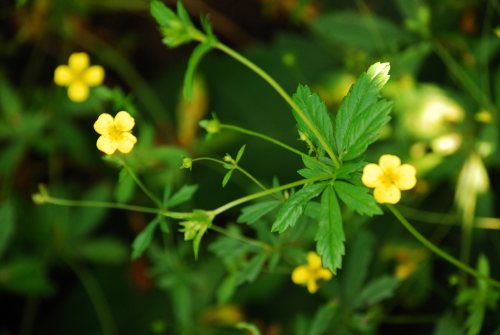

Erect cinquefoil
Foliage grows all over the erect stem on petioles (or attached to the stem itself). Their shape is serrated, wedge-shaped. Stems are slightly fleecy.
The stems are not too tall - 15 - 40 cm in height, on their tops there are small single four-petal yellow flowers, their diameter is 0.8 - 1.0 cm. The petals grow longer than sepals. The plant begins to bloom from the first ten days of April to the first ten days of June. The fruits are egg-shaped nuts. Their ripening takes place in the following terms: from the end of August to the second decade of September.
Application in cosmetology
Kalgan root is an excellent moisturizer and color. These properties are actively used in home cosmetology. For hair dyeing, the root collected at the end of August is used (a little later than the rhizomes dug out for medicinal purposes). It is necessary to make a decoction from 1 large root and 1 glass of water, boiling them for 5 minutes over low heat. Next, 2/3 of this product is mixed with 1/3 of a decoction of chamomile.
For chamomile broth, you need to boil 1 tablespoon of flowers for 5 minutes in 1 glass of water and strain. Kalgan dyes dark hair. The liquid is applied to the head and left on for 20 minutes, then rinsed off. The hair takes on a rich, reddish tint. This home treatment strengthens the roots and adds shine, and also regulates sebum production.
For a darker shade, you can mix galangal broth with natural coffee (strained and without sugar).
Pharmacological properties
Erect cinquefoil rhizomes have a bactericidal, astringent, hemostatic and anti-inflammatory effect. The anti-inflammatory effect is directly related to the presence of tannins, which can create a biofilm. It, in turn, protects fabrics from chemical, mechanical and bacterial influences. At the same time, the vessels narrow and the permeability of the capillaries decreases. Such features of the action are perfectly manifested on reddened, inflamed mucous membranes with stomatitis, pharyngitis, gingivitis, enteritis and gastritis.
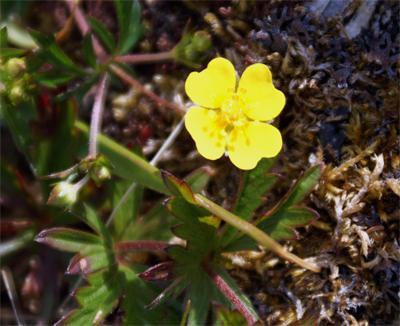

Potentilla care
When caring for a plant, weeding, loosening the soil, watering, feeding and removing wilted buds are carried out. Water application is performed only if there is no rain. Once every two weeks, use a bucket of warm water, pour it under each bush.
With spring mulching of the site with peat and sawdust, the frequency of weeding and loosening decreases. Mulch is added several times over the summer.
They feed the flower three times a season, apply a mineral-type fertilizer intended for flowering plants. Purchased from a specialist gardening store. In a very hot summer season, spraying is rarely recommended.
Planting Potentilla in the open field
The flower is planted in partial shade, the soil is dry sandstone. The earth is dug up and leveled in advance.
Often, seeds are sown before cold weather, then they carry out natural stratification, and in spring, simultaneous shoots are observed. The selected place is well loosened, adding humus, they do this in advance so that the earth settles. The soil is carefully leveled with a rake, the planting material is scattered over the surface and the ground is covered.
When the seedlings appear, they are dived at a distance of about 10 cm, cleaned of weeds. Fortified shrubs are positioned so that the interval between them is 20-40 cm.
In order not to spoil the planting material, seedlings are often used. In this situation, the seeds are used in March:
- prepare boxes and fill them with a mixture of peat and sand, taken in equal proportions;
- moisten the soil;
- seeds are placed on the surface;
- the crops are covered with polyethylene;
- provide a temperature of + 15 ... + 18 ° С;
- after the formation of two permanent leaves, cinquefoil is transplanted in different containers.
They are placed in open ground at the end of the summer season.
The choice of location depends on the variety. There are both capricious and unpretentious types. For example, shiny cinquefoil is placed in dry sandstones on the southern side of the site, white - in partial shade.
When planting seedlings in the ground, it is recommended to follow this plan:
- Make a hole. A layer of gravel is placed at the very bottom, and then the ½ hole is filled with a substrate of sheet soil, humus and sand (2: 2: 1).
- The neck of the rhizome is placed so that it is located above the trench. Empty places are filled with garden soil, rammed and watered.
- A month after planting, the soil is regularly moistened, preventing moisture stagnation.
- Rapid drying of the soil is prevented by mulching the area around the shrub with sawdust, bark and straw.
Name
There are many other names for this medicinal perennial among the people: chicken potion, ovyaznik, ovary root, dubrovka, whisper, kurzels. Latin name - Alpinia
Alpinia
Galangal is translated from Arabic as wild ginger. Indeed, this plant, along with common ginger, is widely used in cooking and cooking as a spice.
White cinquefoil - planting and care
It is best to grow it on your personal plot, especially since this plant is undemanding to soils, moreover, it has a decorative look.
The easiest way to propagate this wonderful plant is by dividing the bush, but the bush should not be younger than a year. The distance between the planted bushes should be approximately 35-40 cm, young plants are usually well accepted and grow quickly.It is important not to forget about the timely watering of seedlings.
You can feed with urea: one tablespoon is needed for a bucket of water. If there is a choice, then it is better to give preference to areas with little shading when planting, since in the sun the plants are slightly worse accepted.
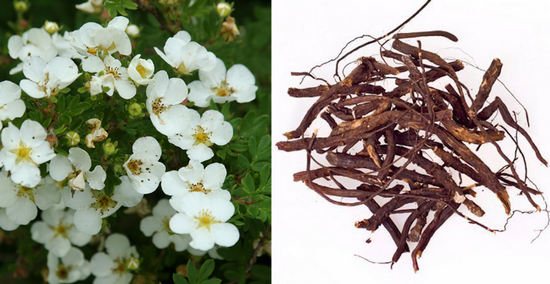

Reproduction of Potentilla
Flower propagation is performed in three ways:
- division of the bush;
- layering;
- grafting.
It is recommended to divide the root system from the age of four. The bush is taken out of the ground and, using a sharpened disinfected knife, is divided into parts. Each new flower should have two to three buds of growth. The rhizome is treated with a growth stimulant and the cinquefoil is placed in the soil. The distance between the seedlings is 20-40 cm.


Reproduction by layering is the easiest way. Shoots growing from below are selected and an incision is made along their outer side. The cinquefoil is bent down, laid with an injured area in a previously dug groove, and covered with earth. By the fall, a rhizome appears, it is separated from the mother shrub and moved to a new site.
Apical shoots with a length of about 10 cm are prepared for cuttings, the buds are removed. Rooted in a vessel filled with slightly damp perlite, or in the ground, covered with some kind of container on top. Sprayed twice a day. All buds that appear are removed. After rooting, the cuttings are transplanted to another place and are already looked after as an adult plant.
Kalgan, or erect cinquefoil
This is a perennial herb that lives in damp meadows, sparse coniferous-small-leaved forests, forest edges and glades. It can also be found in drier places, but the rhizome is less developed under these conditions (as will be said below, this is a rather important clarification).
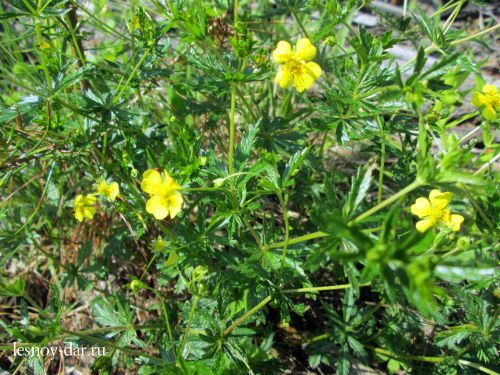

Kalgan, or erect cinquefoil
In the spring, thin stems begin to grow from the buds on the rhizome, branching at a certain height. Basal leaves are long-petiolate, five-fingered, stem leaves are sessile, trifoliate. Most likely, it was for its leaves that Potentilla got its name. After all, they look like the paw prints of some animals.
Small (less than one centimeter) single flowers develop on long peduncles. In galangal, unlike other cinquefoil, they contain not five, but only four yellow petals. And there are four green sepals too.
The plant blooms all summer. In the place of fading flowers in August - September, fruits are formed - many-roots, containing several fruitlets - nuts.
In the soil of Potentilla erect, there is a rather large dark brown rhizome, from which thin roots extend. If a freshly dug rhizome is broken, then at the break, the color will be pale pink. The fracture of the dried rhizome is dark red or reddish brown. In plants living on wetter soils, the rhizome is more powerful. This should be taken into account when harvesting, since it is the rhizome of the galangal that is the medicinal raw material.
Kalgan is a valuable medicinal plant
The rhizome contains tannins (up to 30 percent), starch, glycosides, gum, organic acids, resins and some other substances. Galangal preparations have astringent, anti-inflammatory, bactericidal and hemostatic properties.
Decoctions and alcoholic tinctures are prepared from rhizomes. Traditional medicine has long used them, primarily as a fixative for various intestinal disorders (diarrhea). Galangal was used for diseases of the stomach, as well as for treating wounds, burns, ulcers, cracks on the skin of the hands, on the lips, weeping eczema and other skin diseases.
The healing properties of preparations from galangal are also recognized by modern medicine. Their use, in general, is similar to what folk medicine has done and is doing.
Kalgan will help with diarrhea of various origins.Even such a dangerous infectious disease as dysentery can be treated well with its decoction! After all, the plant, I repeat, has not only fixing properties, but also hemostatic (heals internal bleeding) and bactericidal (kills pathogens).
Kalgan rhizome can also be used for gastritis and enterocolitis, for liver and kidney diseases.
However, remember: self-medication is dangerous! For any disease, you should definitely consult a doctor!
The broth is used for rinsing for diseases of the oral cavity, pharynx and larynx. In this case, its disinfecting properties are used.
Here the author writes: broth, broth ... And how to cook it? Quite simple.
Preparation of a decoction of galangal rhizome
It is necessary to take a tablespoon of crushed (preferably pounded in a mortar) rhizome and pour a glass of water. Then the mixture is brought to a boil, boiled for 10-15 minutes, cooled and filtered. It should be used 3-4 times a day, a tablespoon one hour before meals (for gastrointestinal diseases).
Harvesting and storage of galangal
The rhizome of galangal should be harvested in May, when the plant is just blooming, and in August, when the flowering is already over. It is during these periods that the content of biologically active substances in the rhizome is higher. You can, of course, do this earlier - in the spring, until the aerial shoots have appeared; and in the fall, when they die off. But will you find a galangal then?
The dug rhizomes are washed in cold water and dried under a canopy with good ventilation, in dryers or ovens at a temperature of about 50 degrees.
Of course, it is not at all necessary to prepare the rhizomes of the galangal on your own. You can always buy it at the pharmacy.
In addition to medicinal use, galangal is also used for tanning leather. And also - as a spice - in the manufacture of canned fish.
Well, now about the relatives of Potentilla erect.
How to plant?
Like many other varieties of Potentilla, this variety is unpretentious to external conditions. Nevertheless, it is better for her to choose a place where she will arrive in the afternoon in the shade of other plants. It is enough for her to receive light for 6 hours a day. If the sun's rays constantly fall on the cinquefoil, its flowers will fade and lose their former beauty. And in order for the culture to take root well, it needs a loose and slightly acidic soil with good drainage and a small content of lime.
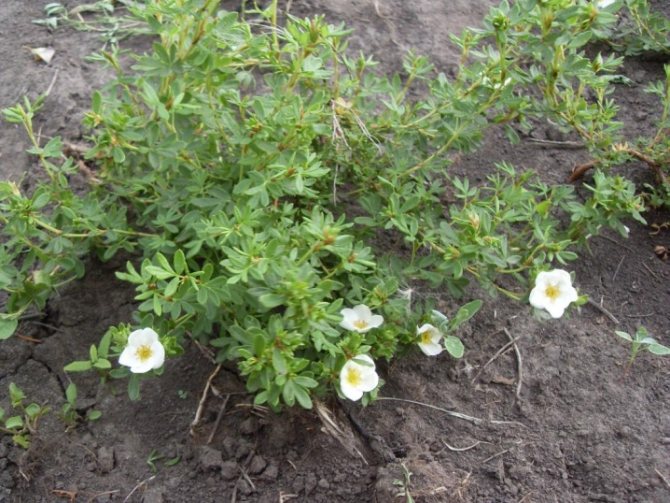

Planting can be done in autumn, summer and spring. However, experienced gardeners recommend doing this in the spring, preferably early, after the snow melts.
Due to the shallow root system, the plant does not need a deep hole for planting. It should be twice as wide and deeper than the clod around the seedling. After you have dug holes of a suitable size, place some limestone gravel on the bottom of each hole to act as a drain. By the way, it can be replaced with broken brick or river pebbles.
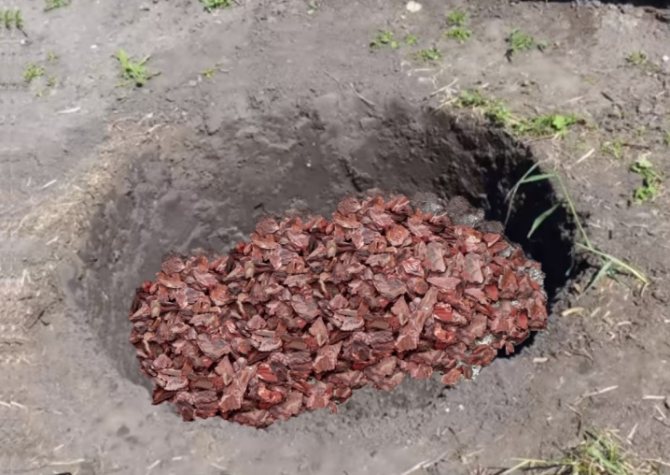

Then you need to fill the pits with a special mixture. It is prepared from humus, sand and leafy earth. Each hole is half filled with it. Then it remains to add 100 grams of mineral fertilizer there. Now you can place a seedling in the hole, but without deepening it, so that the root collar remains above the ground. When backfilling, it is worth using clean soil without additives. After that, it can be tamped and watered.
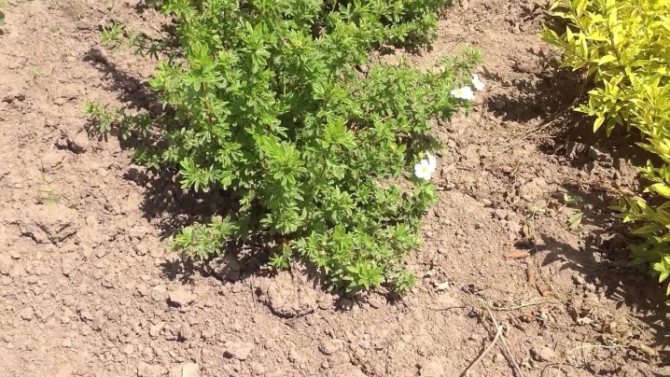

In the first 3 weeks, you will have to water the cinquefoil every time the topsoil dries out. To slow down this process, the soil can be mulched with straw or sawdust in a layer of 5 cm. Once the plant takes root, the frequency of watering will need to be reduced.
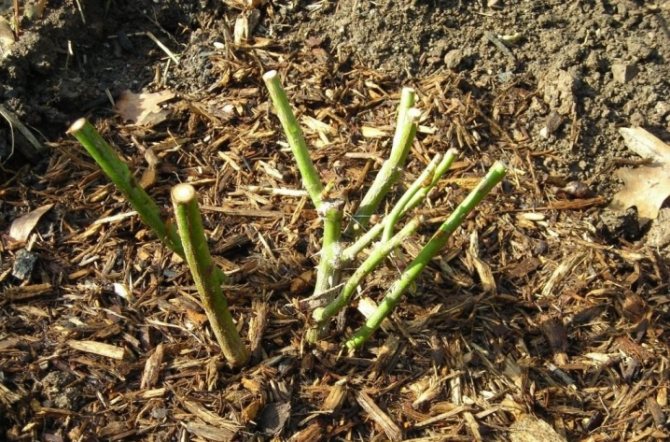

Plant in culture [edit | edit code]
In 1988, the Faroe Islands Post Office issued a set of four stamps depicting flowering plants. Among them was a stamp with an image of erect Potentilla.
Kalgan, due to its medicinal properties, can be immediately associated with a plant that treats impotence.Its other name is Potentilla, but among our people it is "mighty", since, along with ginger and ginseng, it has a beneficial effect on the potency of men. What is remarkable is not its last merit. Dried galangal root, also known as Gao Liang Jian herb, is the most important raw material in famous Chinese medicine, it is used in ointments, balms, and galangal root is also added to tea, beer, powder, extract, essential oil, etc. Ointments, based on it, are one of the most convenient and popular ways to treat headaches, itchy skin, mild burns, mosquito and insect bites and other minor ailments. Kalgan herb is also widely used as a condiment in cooking. In fact, it seems to be everywhere in our life. So, is it edible, how is it used and can it be used during pregnancy?
Decoction recipes, ointments and tinctures
Recipes:
- decoction for gastrointestinal diseases: 1 tablespoon of chopped cinquefoil rhizomes in 1 glass of cold water, bring to a boil and boil in a water bath for 15-20 minutes, filter. Take 2 tablespoons 3-4 times a day one hour before meals. For hemorrhoids, they are used in the form of lotions and baths.
- decoction for gastritis, peptic ulcer with low acidity and as a choleretic: 30 g of chopped rhizomes in 1 glass of water at room temperature, boil for 15 minutes, filter. Take 1 tablespoon 3-4 times daily after meals.
- tincture: 40 g galangal per 500 ml of vodka, insist in a dark place for 3 weeks, shaking occasionally, filter. Take 30 drops with water, 3 times a day 15-20 minutes before meals or 50 g at night.
- ointment from the herb Potentilla erect: Boil 5 g of rhizomes ground into powder for 5-10 minutes in 1/2 cup of butter, filter warm in a dark glass bottle. Keep refrigerated. Apply a thin layer to the affected skin areas 2-3 times a day.
- tincture for prostate adenoma: mix in equal parts by weight of the crushed roots of galangal, licorice and nettle. 100 g of the mixture for 0.5 l of vodka, insist in a dark place for 1 month, shaking occasionally, filter. Take 30 drops 3 times a day before meals with an infusion of lemon balm leaves.
- tincture for the prevention and treatment of gastric ulcer: 1 tablespoon of chopped galangal roots, 1 tablespoon of thyme, 3 cloves (spice), 1 teaspoon of forest mint (peppermint or lemon balm are not suitable), 3 allspice peas, 1 tablespoon of liquid honey for 450 ml of vodka, infuse in cool place for 15 days, shaking daily, filter. Take 1 tablespoon before dinner.
- decoction for stomatitis: 1 teaspoon of chopped root in 1 glass of water, leave for 5 hours, bring to a boil, let cool, filter. Rinse your mouth out throughout the day.
- decoction for weeping eczema: 3 tablespoons of root in 0.5 l of water, boil for 10 minutes, leave for 4 hours, filter. Apply lotions to the affected areas.
- infusion for cirrhosis of the liver: 25 g of dry chopped herbs and 5 g of galangal root per 600 ml of boiling water, boil in a water bath for 30 minutes, leave for 30 minutes, filter. Take 50-100 ml warm 3 times a day 2 hours before meals every day for 1.5-2 months and prophylactically 2 times a year for a month in spring and autumn (treatment of liver cirrhosis after an infectious hepatitis). Follow a diet, limit salt to 3-4 g and liquid to 500-600 ml per day during treatment.
Contraindications for the use of erect cinquefoil: atonic constipation, high prothrombin index, hypertension.
Growing
Kalgan looks good as a group on the eastern or western slope of a rocky hill. Flowering continues almost all summer, so it is decorative for a long time. The dissected leaves and numerous small yellow flowers create the effect of lightness and airiness.
The plant prefers loose, fertile soil with a neutral or slightly acidic reaction of the environment. On heavy clay soils, the roots are gnarled and shallow, and the aboveground part is not so lush.
To grow this plant with seeds for a long time. Planting material is easiest to bring from natural habitats. It is best to dig up plants during flowering when they are easy to spot. After planting on the site, they are watered and shaded for a while. This contributes to better survival rate. Care is the most common and includes only loosening, weeding and, if necessary, watering. Later, when digging up raw materials, the upper part of the root with renewal buds can be planted in the vacant place and after 2-3 years the plants are again suitable for obtaining medicinal raw materials and further division.
Rhizomes are harvested in the fall. Dig it with a shovel, free it from clods of earth, cut off the thin roots and branches of the stems, place them in baskets and wash. They are laid out in the street for drying and withering, and then dried in the attic or in a dryer at a temperature not higher than + 60 ° C, stirring occasionally. Raw materials retain their medicinal properties for 4 or even more years.
|
Cooking recipes
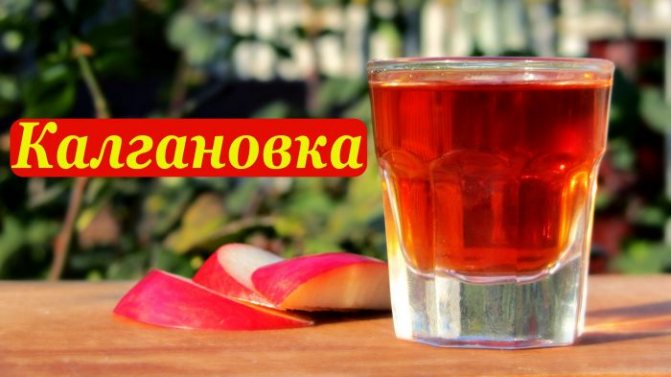

Depending on the purpose of the drug, various recipes for its preparation are used:
- Alcohol tincture. The ratio of raw materials and 40% alcohol is 1 to 5. In other words, 500 ml of alcohol is taken per 100 grams of grass. The remedy is infused for 21 days. The tincture is taken in 45 drops for liver and gastrointestinal tract pathologies, diarrhea. The tincture is suitable for rinsing and lotions. Only for this type of treatment, an aqueous solution is prepared (10 ml of tincture is taken per glass of water).
- In the form of a hemostatic agent, they drink a decoction of rhizomes. For this, 20 grams of raw materials are boiled in 180 ml of water for ¼ hour. After straining, take 15 ml 6 r / d.
- For rinsing the mouth and throat, prepare a decoction in the proportion of 10 g of grass per 0.2 l of water. The cooking method is the same as described above.
- For stomatitis and gingivitis in dentistry, a glycerin tincture is prepared to lubricate the gums. To do this, 20 ml of galangal alcohol tincture is mixed with glycerin (80 ml).
- In case of gastrointestinal diseases and liver pathologies, a decoction of the root in milk is taken. For one glass of milk, take 5 grams of raw materials, boil for three minutes and leave for ½ hour. After straining, take 15 ml three times a day.
- With diarrhea, it is useful to drink tea from Potentilla. For its preparation, a teaspoon of raw materials is brewed in a glass of boiling water and boiled for 1/6 hour over a fire. Then let it brew for ¼ hour and filter. The cessation of diarrhea will occur after three days of regular tea intake.
- With flatulence, a collection of caraway seeds and galangal seeds is used in equal proportions. And for diseases of the gastrointestinal tract, mint is used instead of cumin. The remedy is prepared like the tea described above.
- The universal cognac tincture is prepared as follows: for a bottle of cognac (0.5 l), take 50 grams of crushed raw materials and insist in the dark for three weeks. Take 30 drops ½ hour before meals.
- To get rid of prostate adenoma, a collection of herbs is prepared: galangal root, nettle and licorice. All in equal proportions. For 750 ml of water, take 10 grams of the mixture, bring to a boil and cook for three minutes. Consume 0.25 liters in the morning and evening.
- A decoction of rhizomes is used as a hemostatic agent. 100 grams of raw materials are taken per liter of water. After boiling, boil for 10 minutes and insist for an hour under the lid. After filtration, take 15 ml 4 r / d.
To restore the liver after hepatitis, antibiotics and other pathologies, a mixture of plant leaves (25 g) and its rhizomes (5 g) is used. The collection is poured with boiling water (600 ml), insisted for half an hour in a water bath and the same amount under a lid, removed from the heat. Take 0.05-0.1 liters 3 r / d. The treatment course is 45-60 days. The preventive course is 30 days twice a year. During treatment, it is important to stop drinking alcohol, salt, animal fats and other foods that are heavy for the liver.


Erect cinquefoil (galangal) is often prescribed in the form of collections and decoctions for a variety of diseases of the human body. The scope of this medicine is huge: from external treatment of suppurations on the skin and throat to stopping uterine bleeding.
But most often, erect cinquefoil finds its application in the treatment of diseases of the gastrointestinal tract. The medicinal properties of erect cinquefoil can effectively restore liver cells and mucous membranes of the stomach and intestines.
We invite you to find out about the main medicinal properties and contraindications for using the herb Potentilla erectus for somatic pathologies of the urinary system, diseases of the gastrointestinal tract and upper respiratory tract. Only he has all the necessary knowledge of the medicinal properties of erect cinquefoil and contraindications, it is possible to carry out effective treatment at home. Be sure to take into account all the information given in the article - they will help not to harm your health.
Botanical characteristics
Cinquefoil is a medicinal plant that resembles a sprout of grass. In height, it reaches up to 1.5 m. Shoots can be erect, ascending or creeping. The very rhizome of the plant is superficially located on the ground. Potentilla leaves are green in color. The shape of the leaves is dissected.
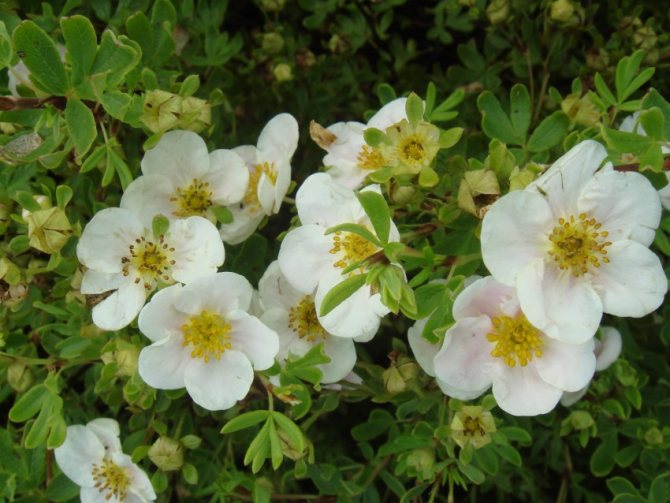

Small flowers of the plant are located at the tips of the shoots in loose paniculate, corymbose or pseudo-umbellate inflorescences. In addition, they are able to grow apart on tall, straight peduncles. Potentilla begins to bloom in May.
The flowers of the plant are bisexual, their color is very diverse. Among the colors you can find yellow, orange and even white. Potentilla petals are of the same tone, or differ from others in two-tone tones.
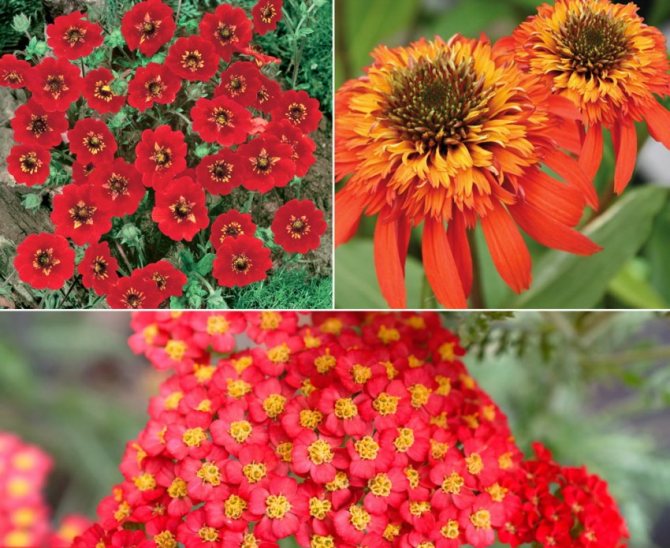

The plant is pollinated by the wind or some insects. After 3 weeks after pollination, on the cinquefoil, you can see fruits that resemble olive-colored nuts. They are grouped in 10-80 pieces inside a fine hair achene.
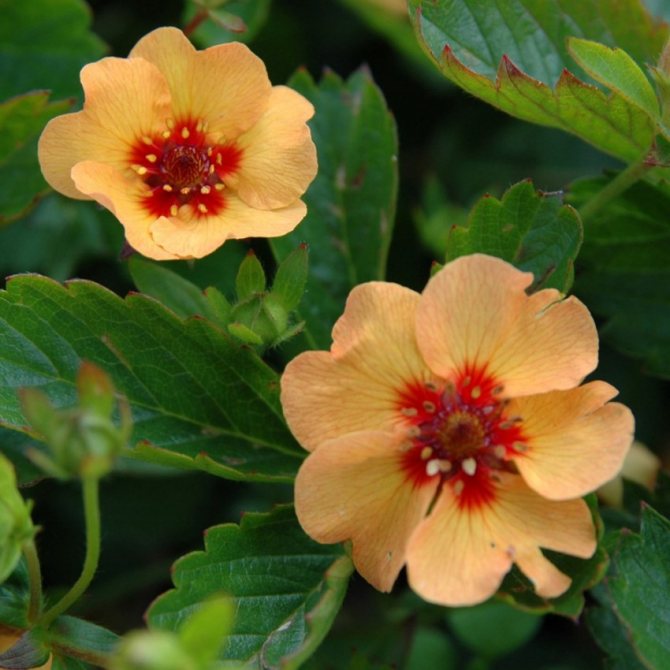

Galangal extract
It is used as an anti-inflammatory, astringent, choleretic, hemostatic and expectorant for the following diseases:
- gum disease;
- uterine and intestinal bleeding;
- gallbladder disease;
- skin diseases;
- enterocolitis;
- thyroid disease;
- hemorrhoids;
- gastrointestinal diseases;
- diarrhea;
- angina;
- gout.
This extract is prescribed for adults (three times a day, 6 drops), as well as for children (three times a day, 3 drops), you can add it to warm tea, compote or juice.
Undiluted galangal extract is used for lotions.
Blank
Erect cinquefoil is harvested in autumn, in October (after the death of its aerial parts) or in early spring, before the first leaves appear.
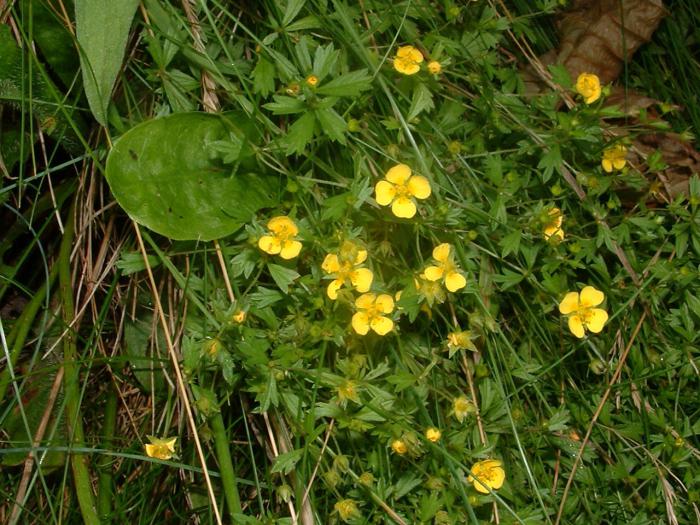

Rhizomes must be dug up, shaken off the ground, cut off the aerial parts and rotten parts of the rhizomes with a knife. After that, wash the roots in cool water and leave for a couple of days in the fresh air. Then for a few days they must be taken to dry under a canopy or in an attic with excellent ventilation. Dry rhizomes can be stored for up to 6 years.
Photo Potentilla
Galangal tincture
The tincture is used orally for pathologies such as:
- diseases of the stomach and liver;
- jaundice;
- dysentery;
- enteritis;
- diarrhea;
- enterocolitis;
- gastritis;
- ulcer;
- colitis;
- cholangitis;
- cholecystitis;
- bronchitis;
- nephritis;
- gout;
- heart diseases;
- bleeding;
- diseases of the uterus.
The tincture is used externally in the form of lotions for burns and eczema, in addition, for various diseases of the oral cavity. Galangal root polyphenols have been proven to have excellent antibacterial properties.
In order to prepare this tincture, you need to pour 30 g of Potentilla rhizomes with a bottle of vodka, then leave to infuse for three weeks in a dark, ventilated place, while shaking regularly. Then the tincture is used thirty drops three times a day. Reception is carried out twenty minutes before eating.
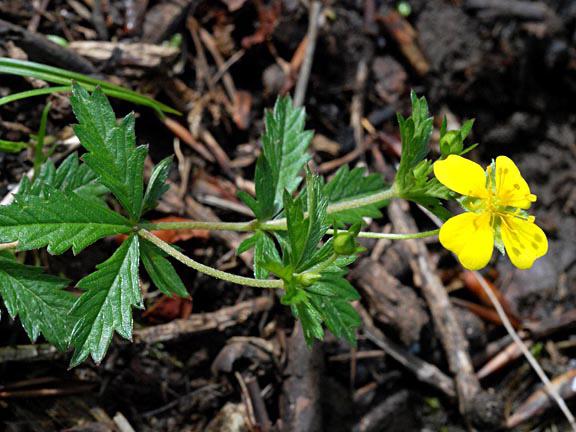

Mister summer resident warns: diseases and pests
The shrub has good immunity and rarely suffers from insects and diseases. But there are a number of pathologies that still affect the cinquefoil:
- rust;
- spotting;
- powdery mildew.
If an annual was struck, then no action is taken. In September, the shrub is already thrown away, and the summer decorative effect will not decrease in any way. In the presence of diseases in perennials, they are treated with fungicides. Colloidal sulfur or Bordeaux liquid works well. Of the pests, the plant is occasionally affected by scoops. They are eliminated using insecticides Decis and Fitoverm.
Silver cinquefoil
This plant is very close to erect cinquefoil, and very similar to it.
The differences, however, are visible in the photo. First of all, the flowers of Potentilla are silvery, the same small and yellow, but already five-membered: 5 petals and 5 sepals. And they are collected in an inflorescence - a loose brush.
The leaves are whitish below - hence the name "silvery". The underside is covered with numerous fine hairs.
Silver cinquefoil
After all, silver cinquefoil grows on dry sandy soils: slopes, in pine forests; often found on roadsides, railroad embankments. In fact, in the same place where another, described by me recently, is found, the plant is a caustic sedum.
And, just like sedum, it is vitally important for this cinquefoil to retain moisture, to prevent its excessive evaporation. This is facilitated by the hairs on the underside of the leaf. Usually the top side is glossy green. But sometimes you can see plants in which even it is silvery white.
Silver cinquefoil rhizome can be used in the same way as galangal rhizome. That's just it in this plant, which lives in extreme conditions, is small and branched. Accordingly, the “yield of medicinal raw materials” will not be the same!

